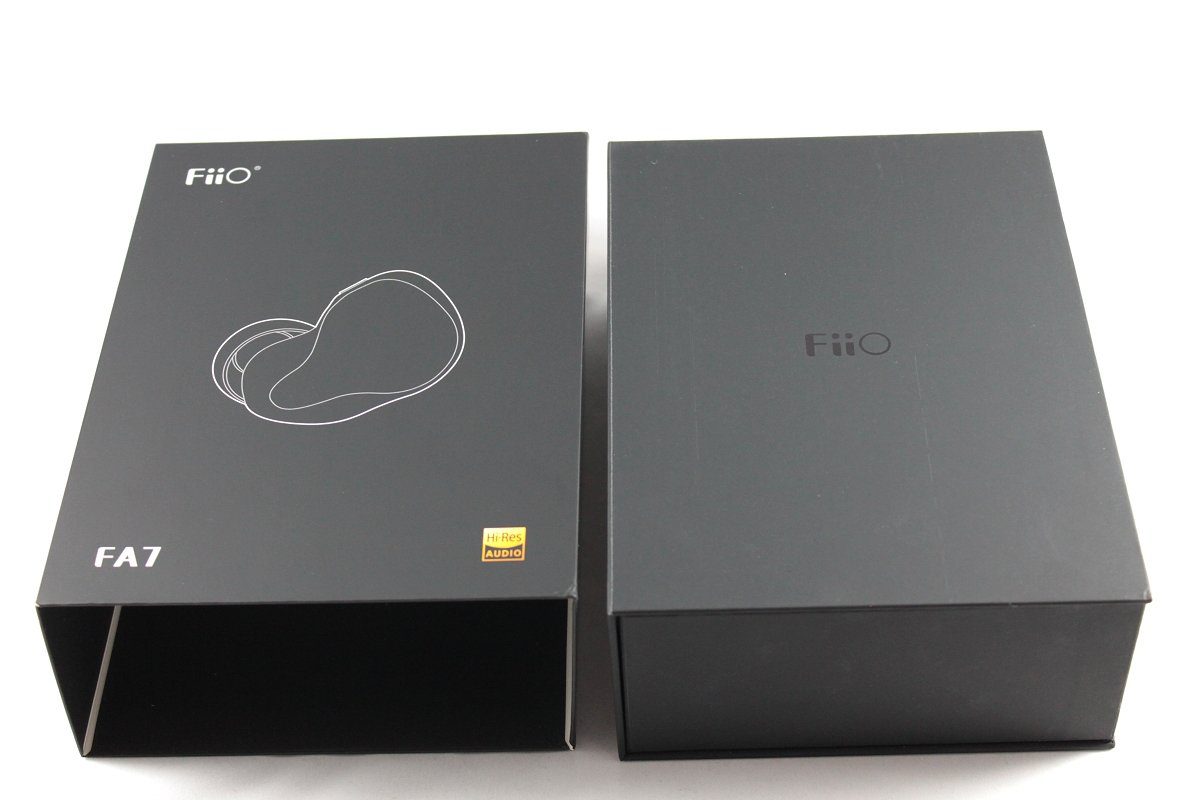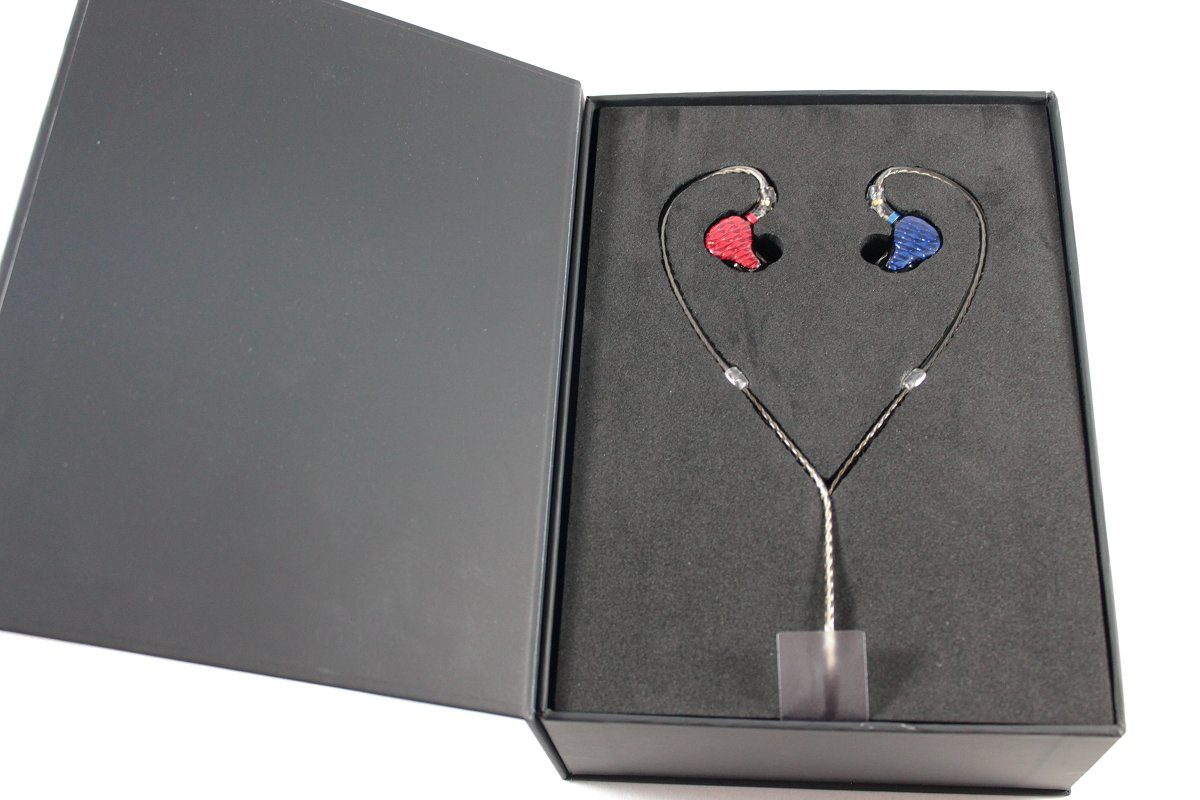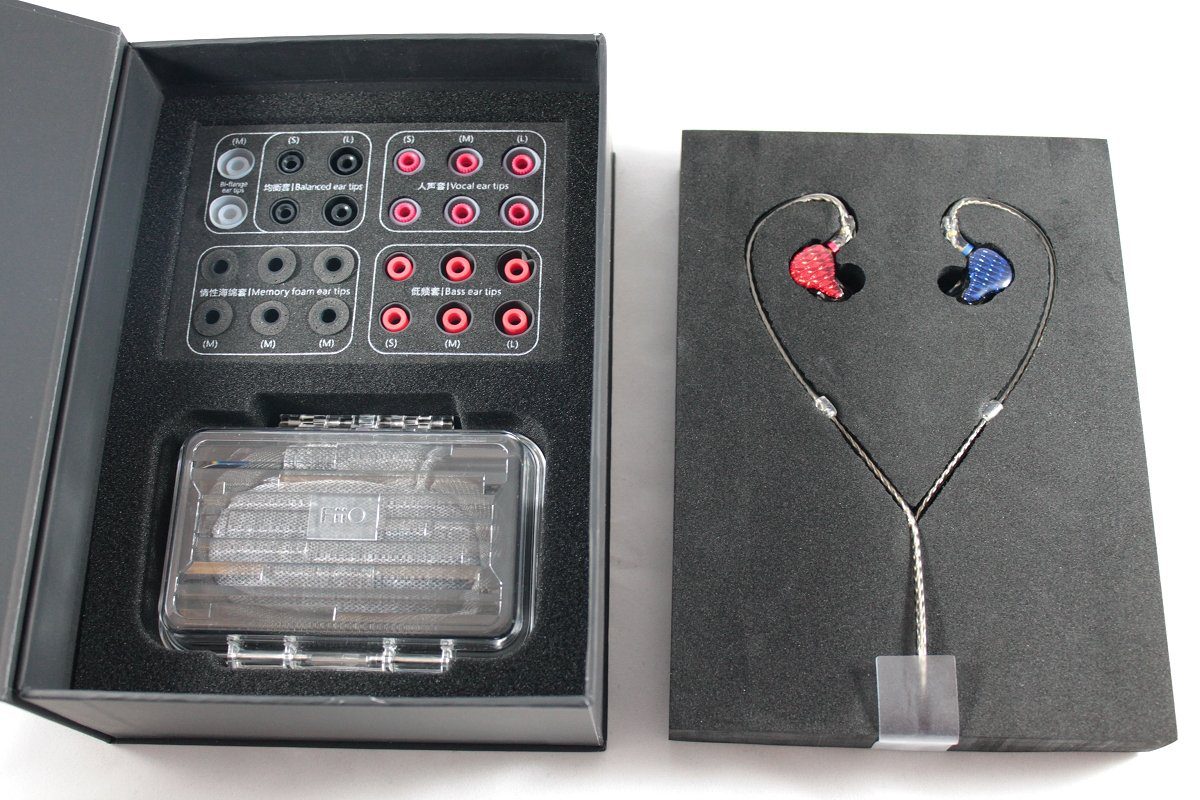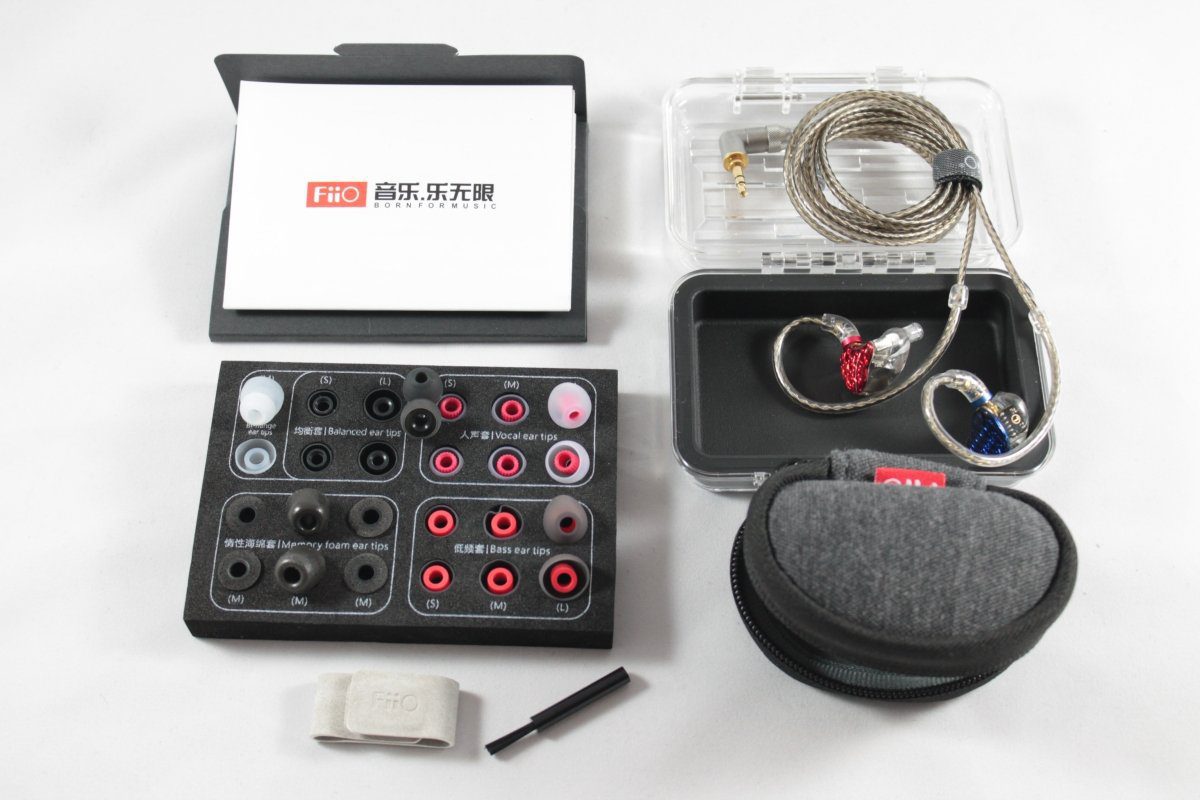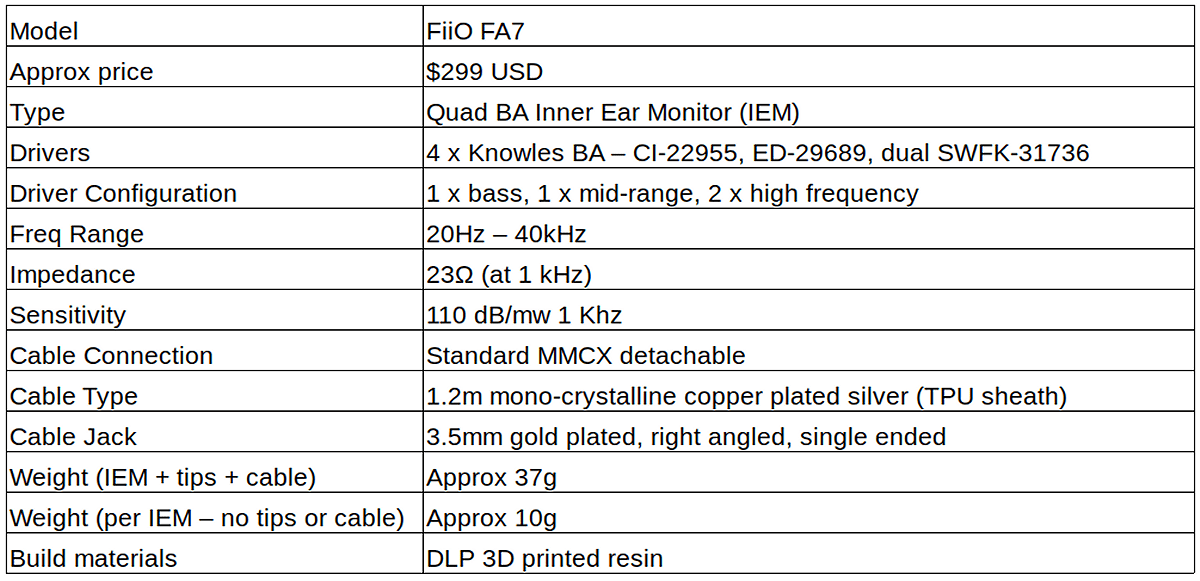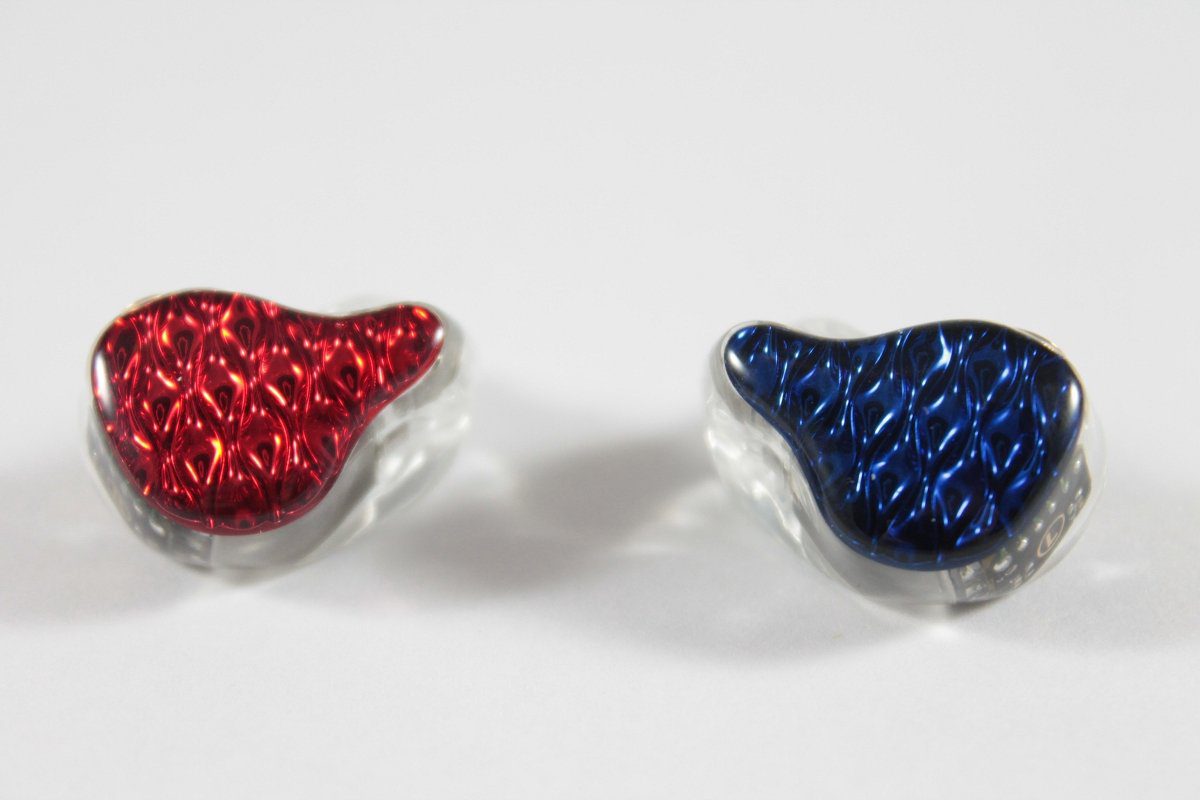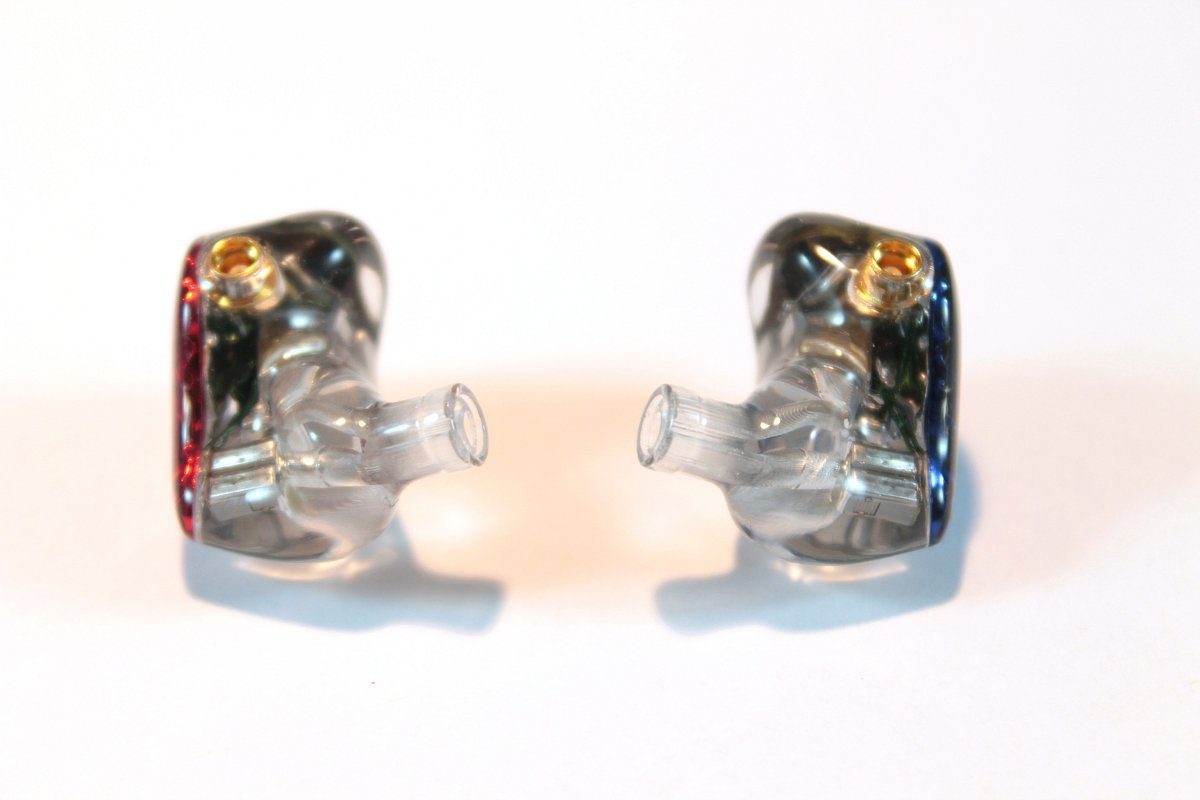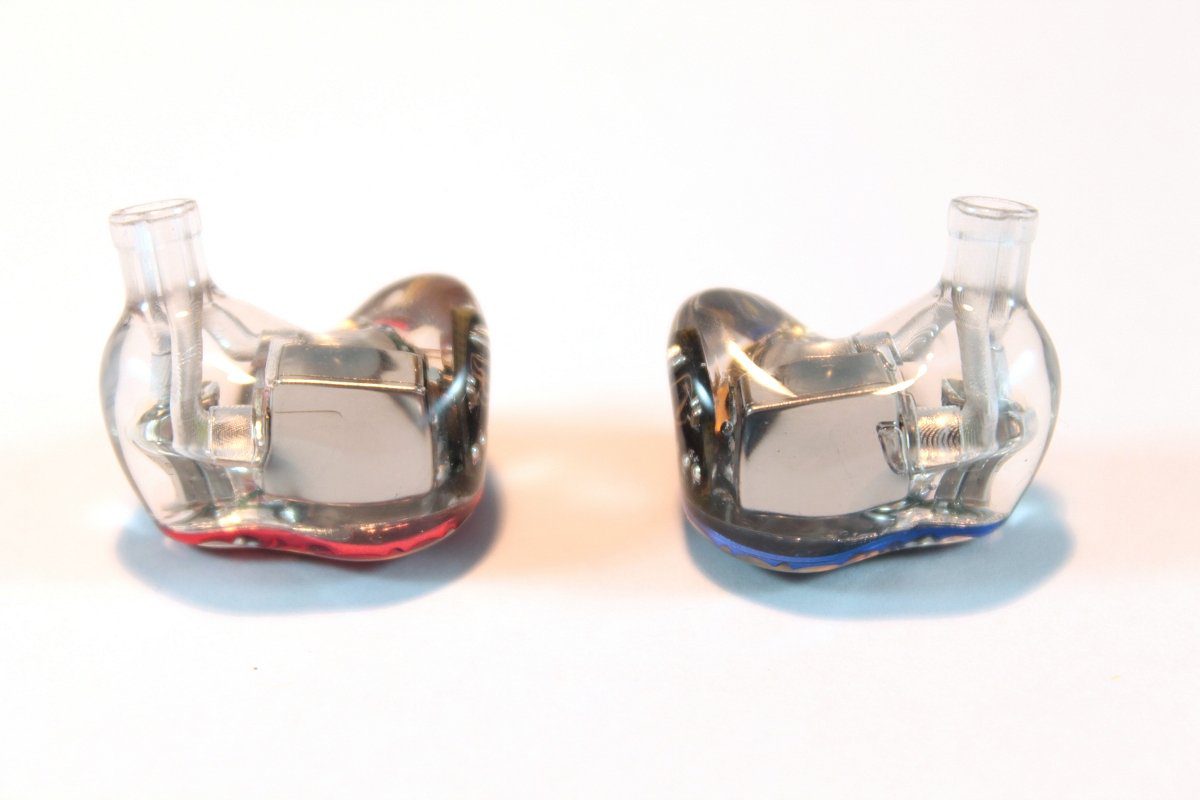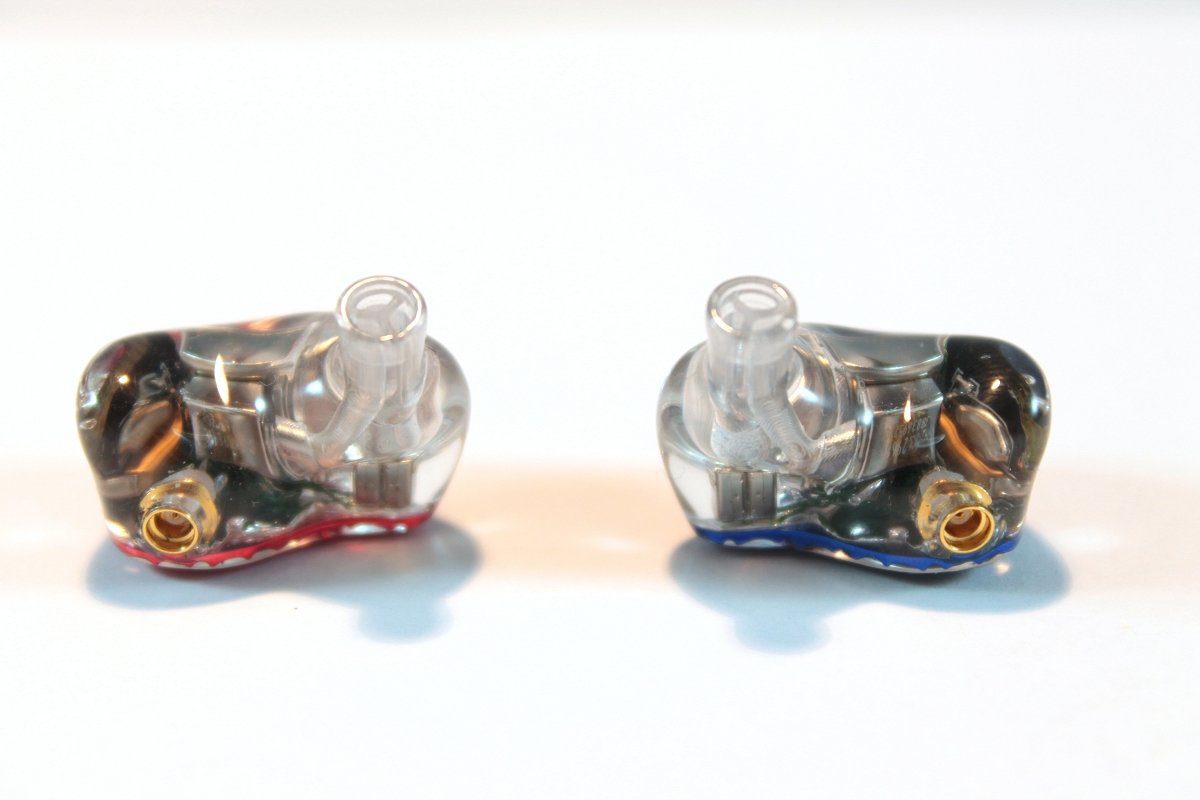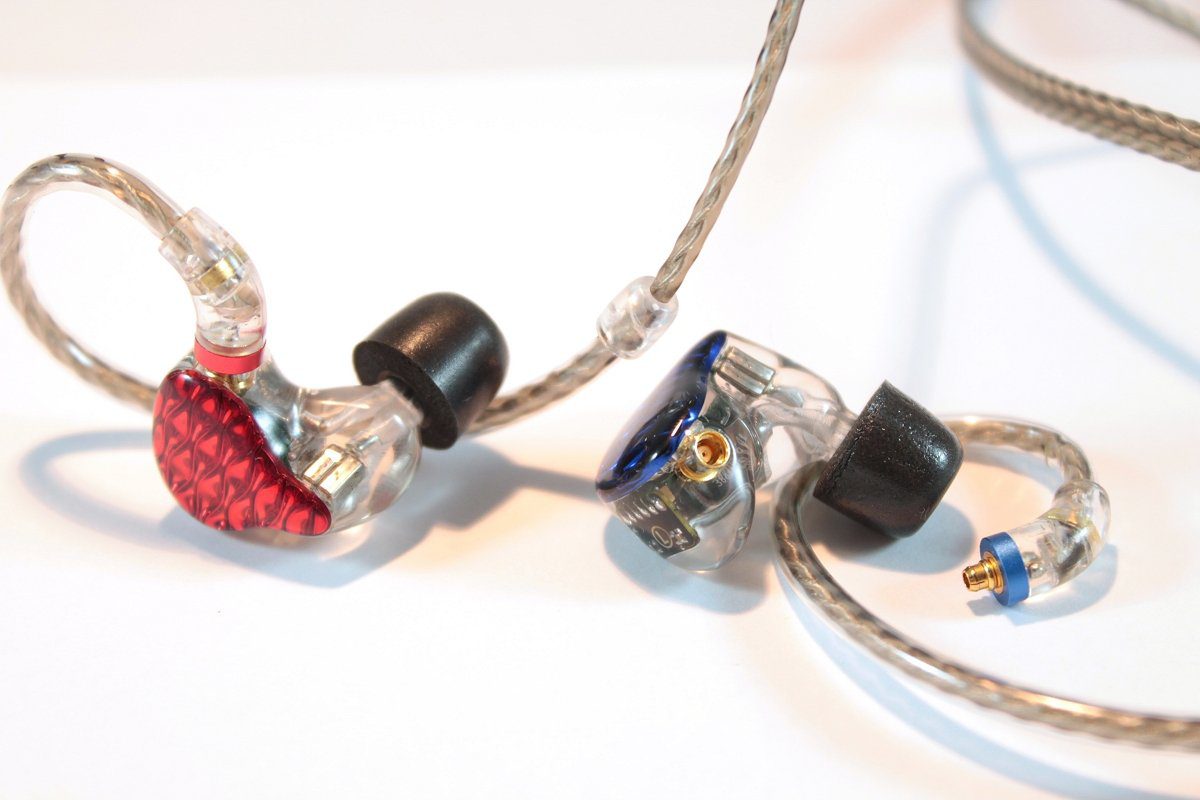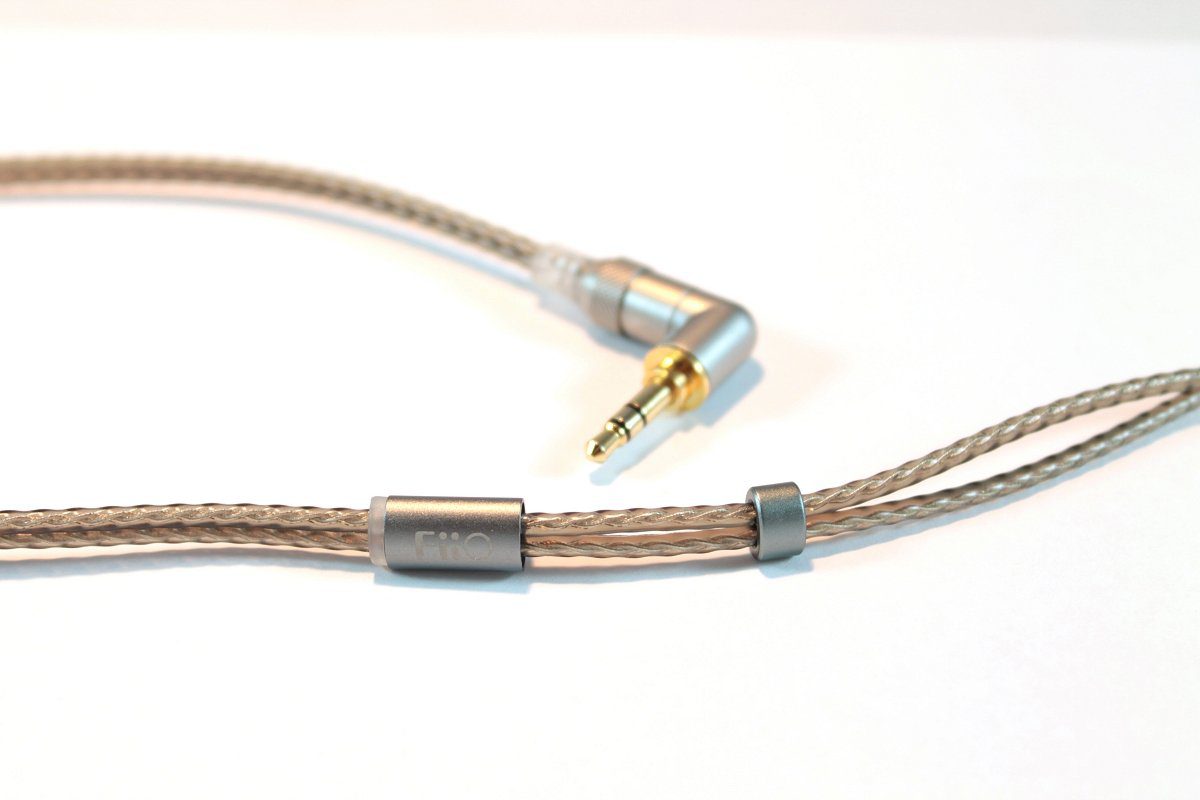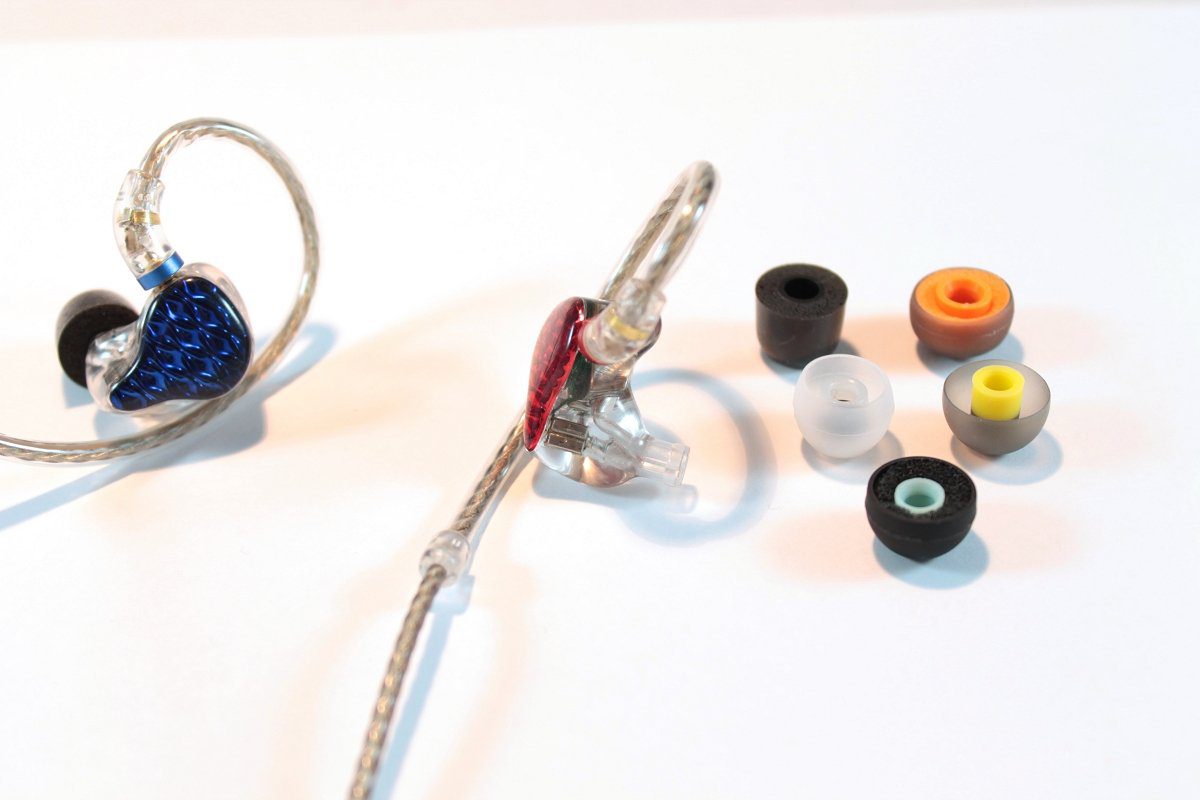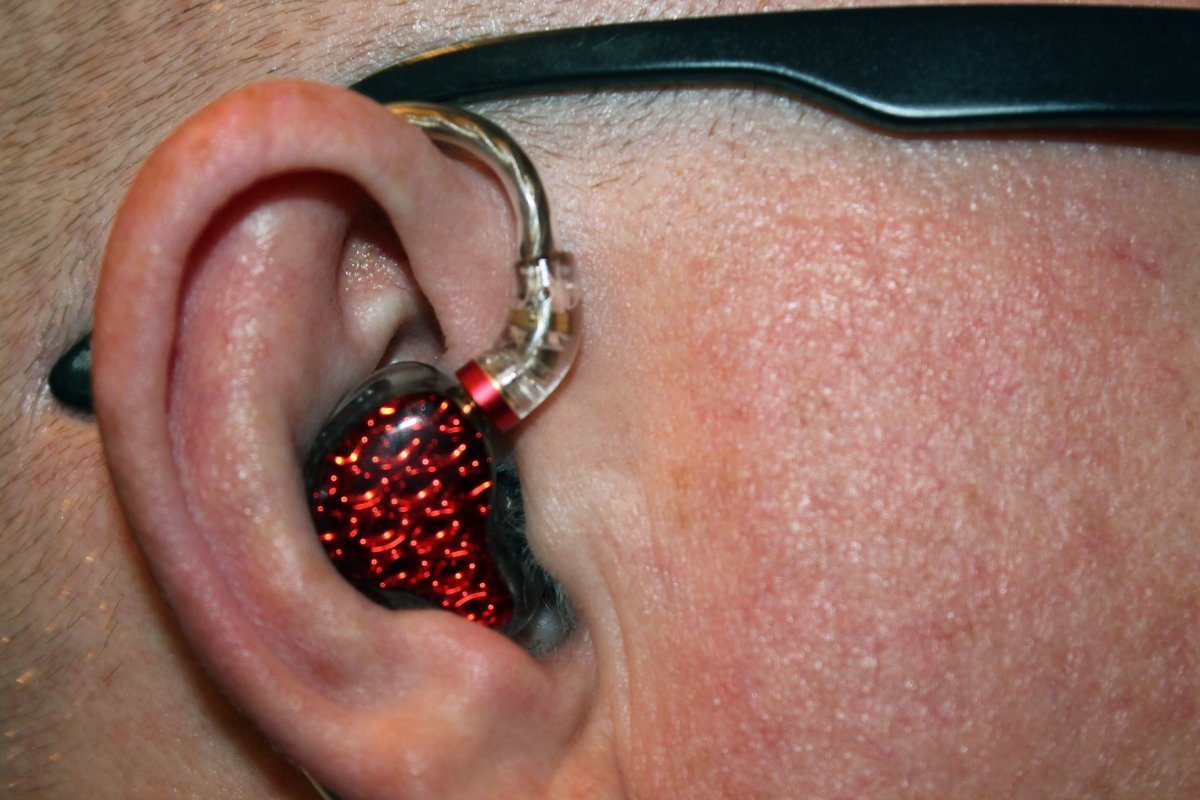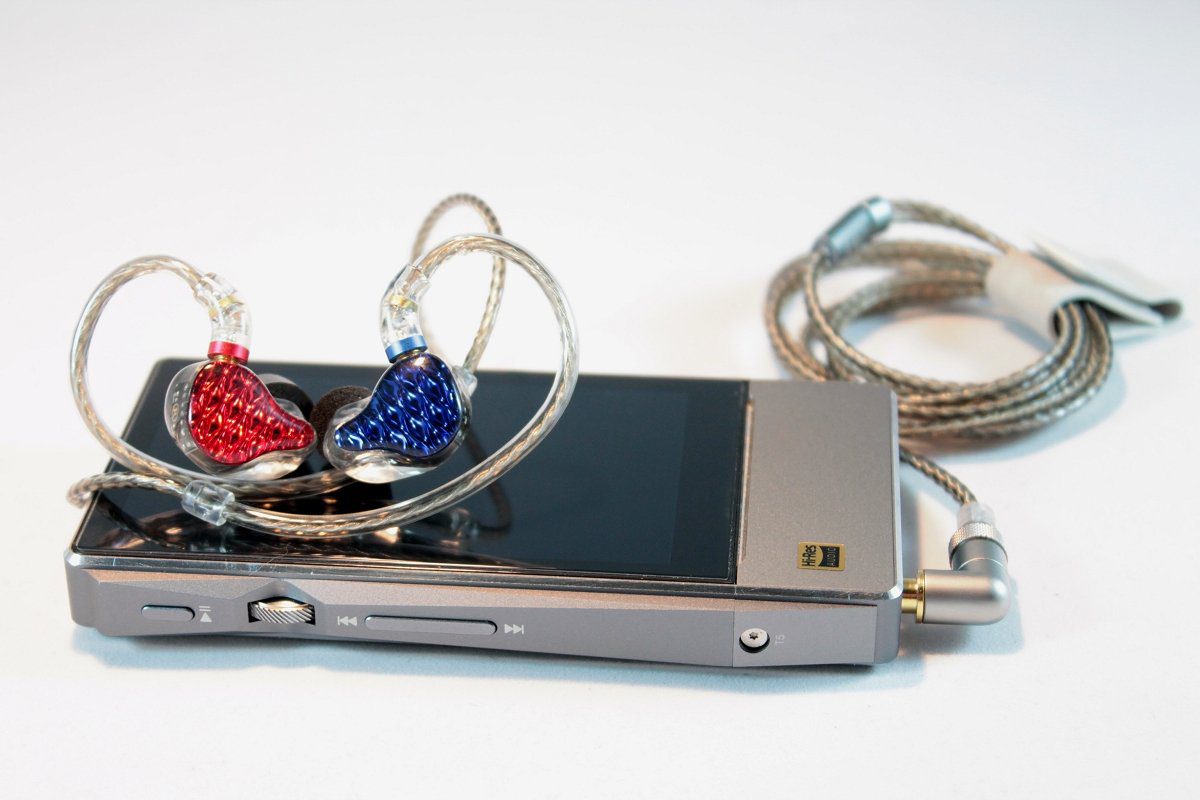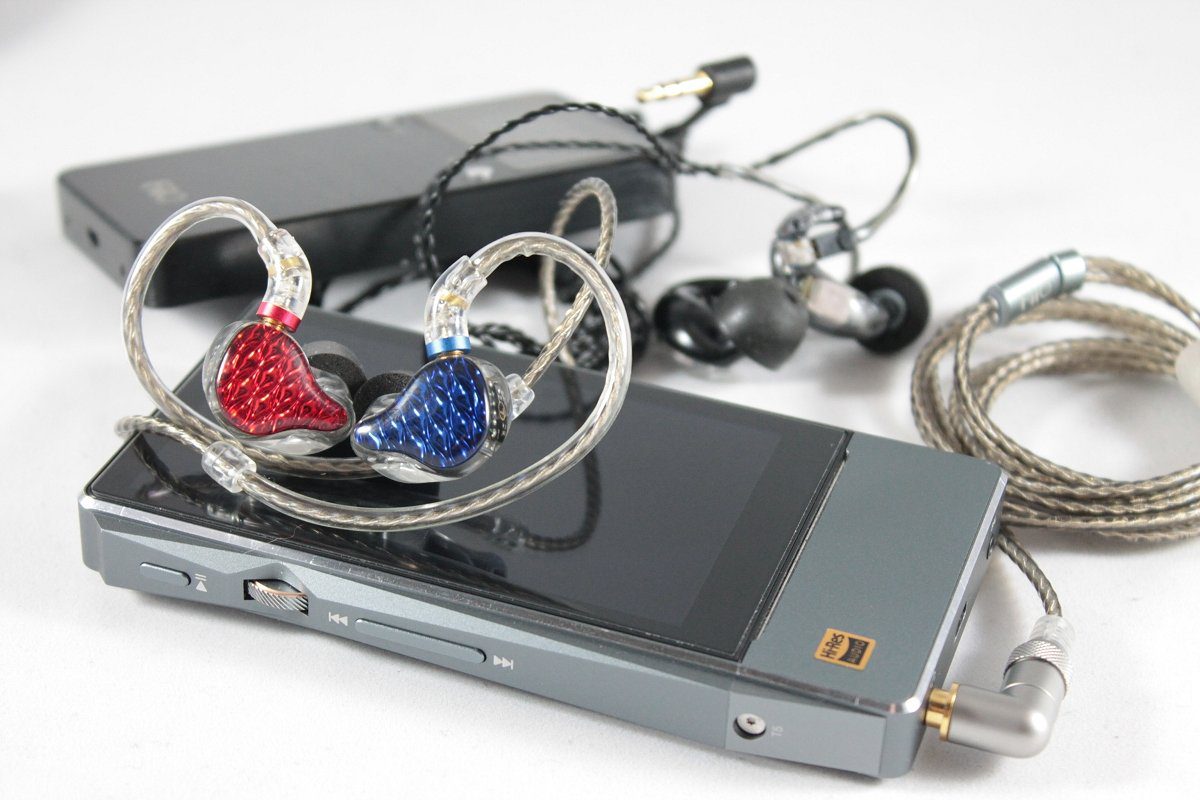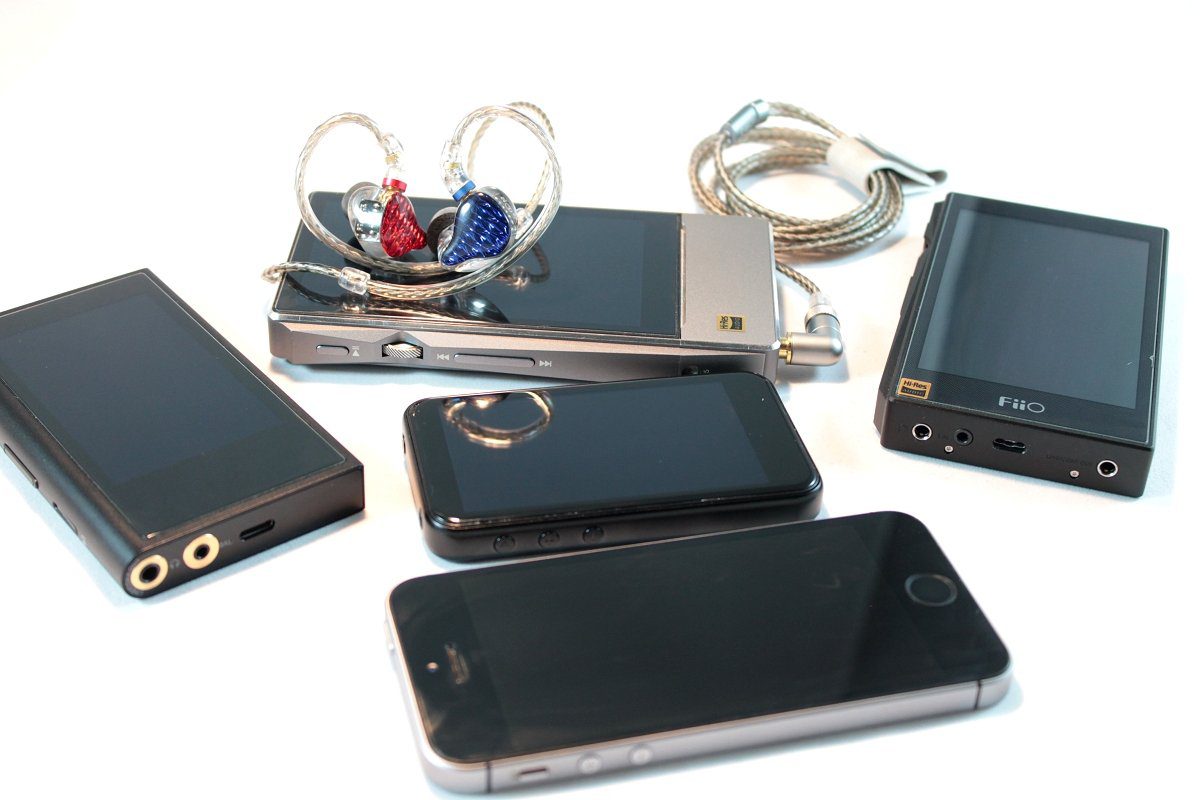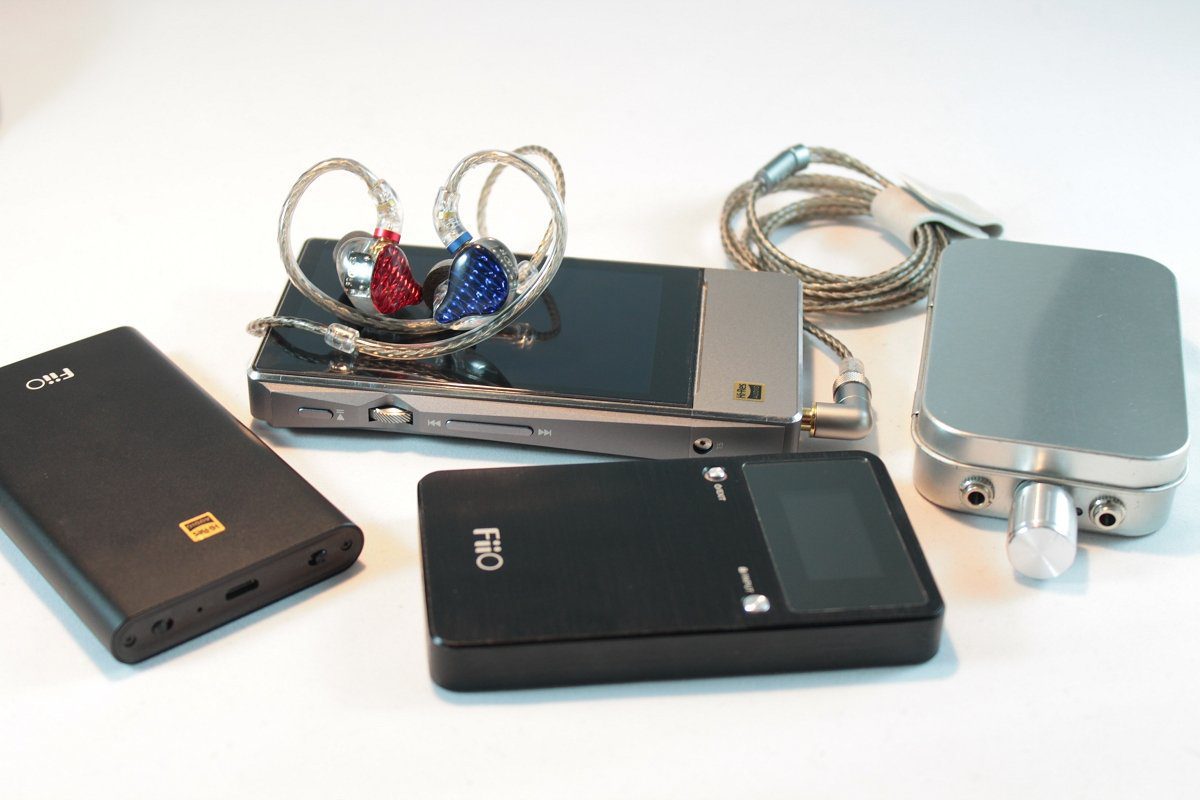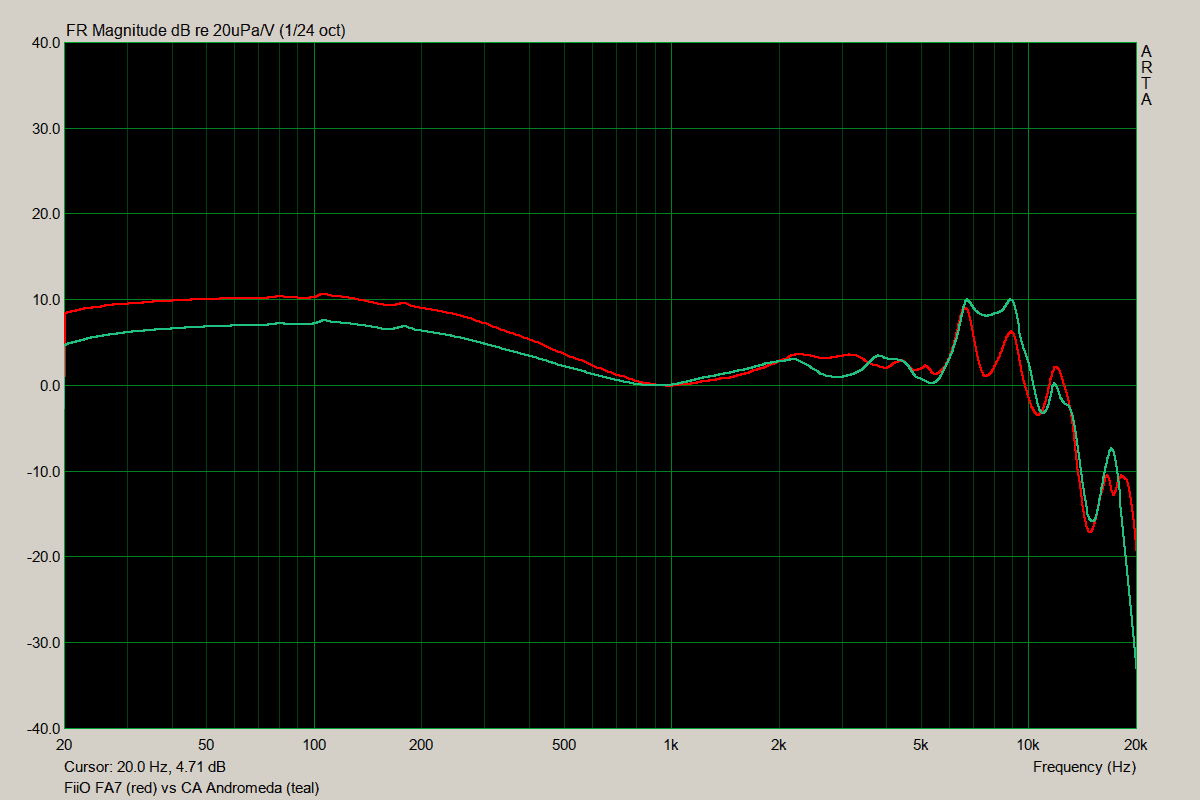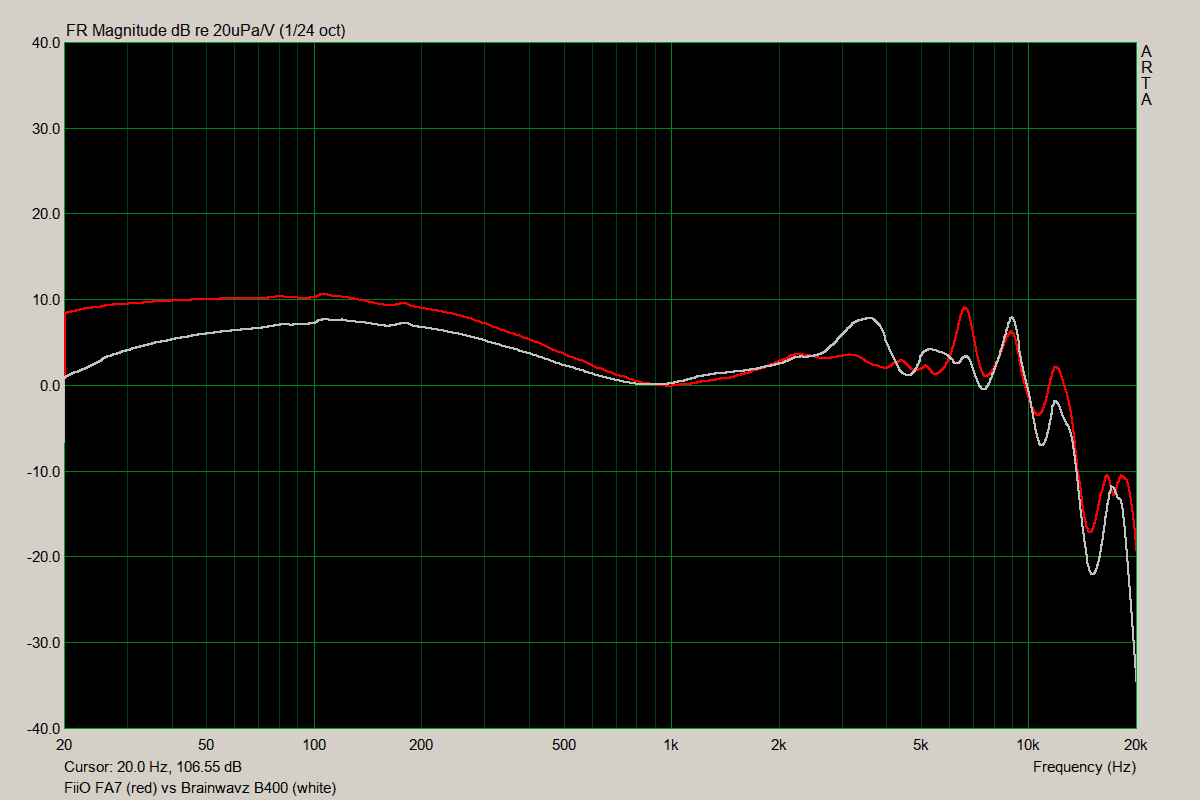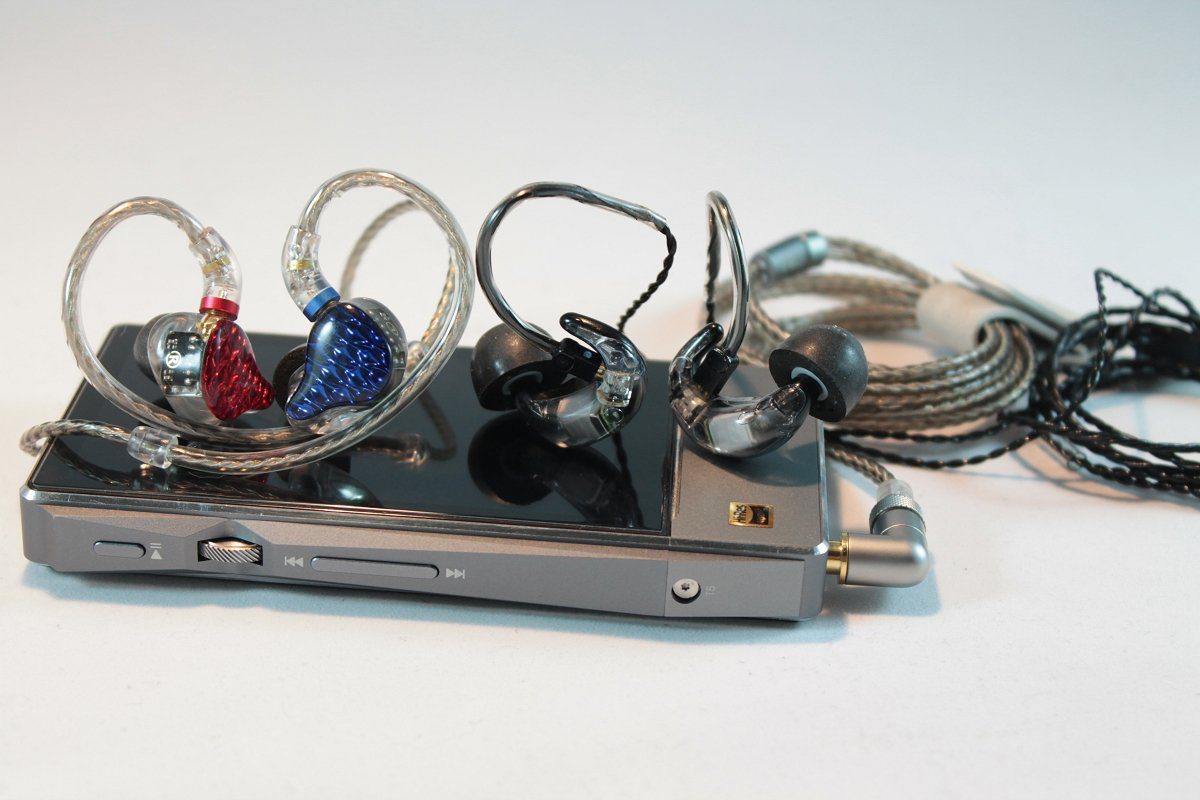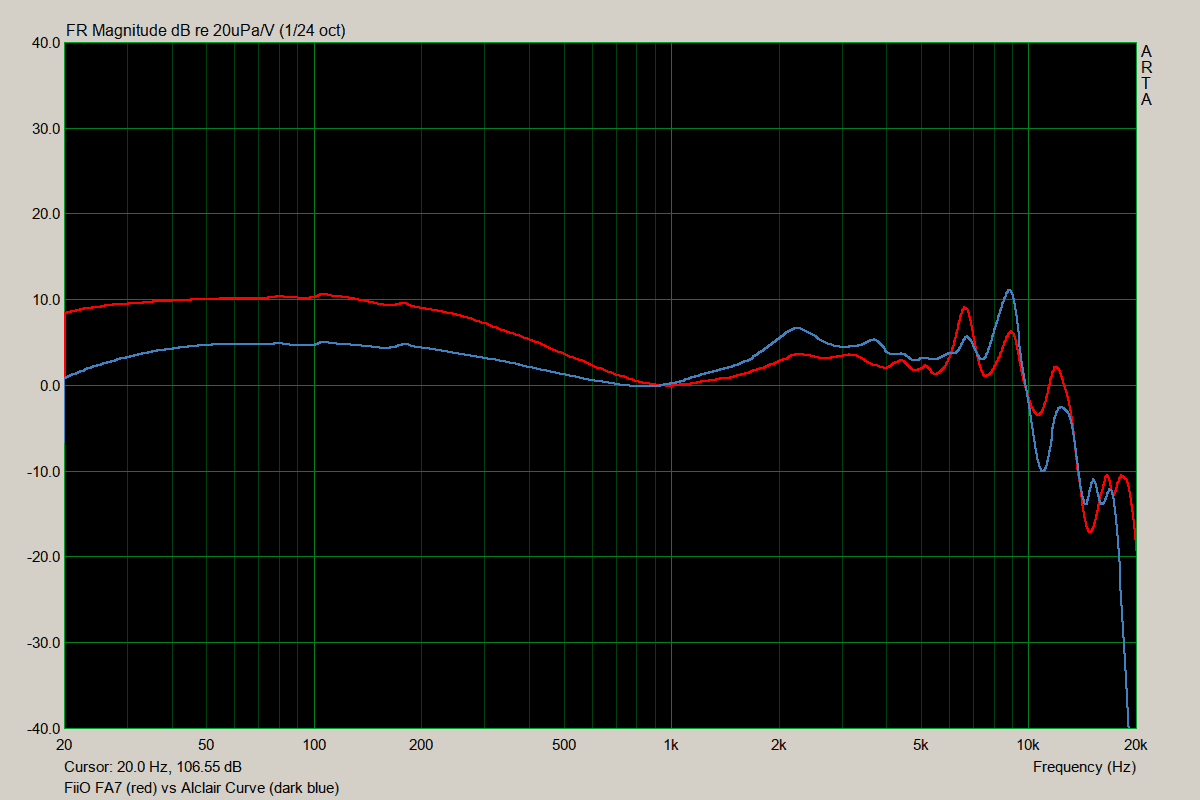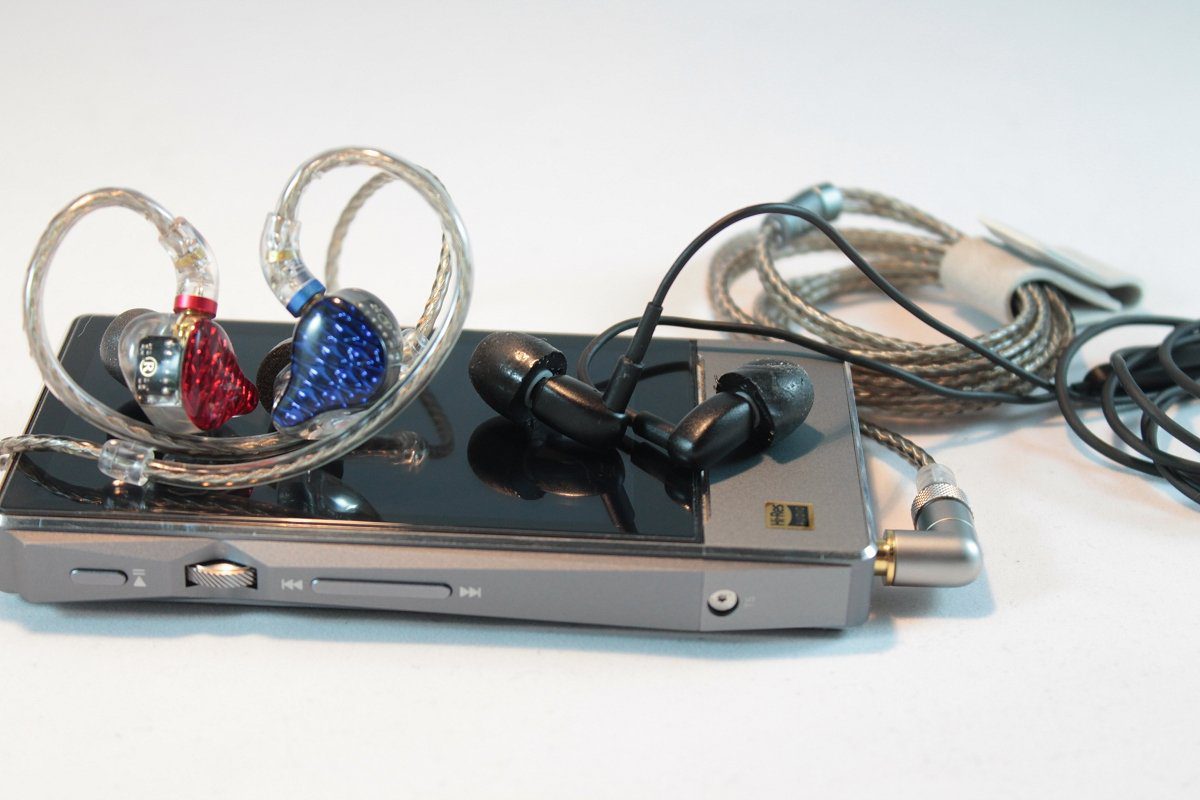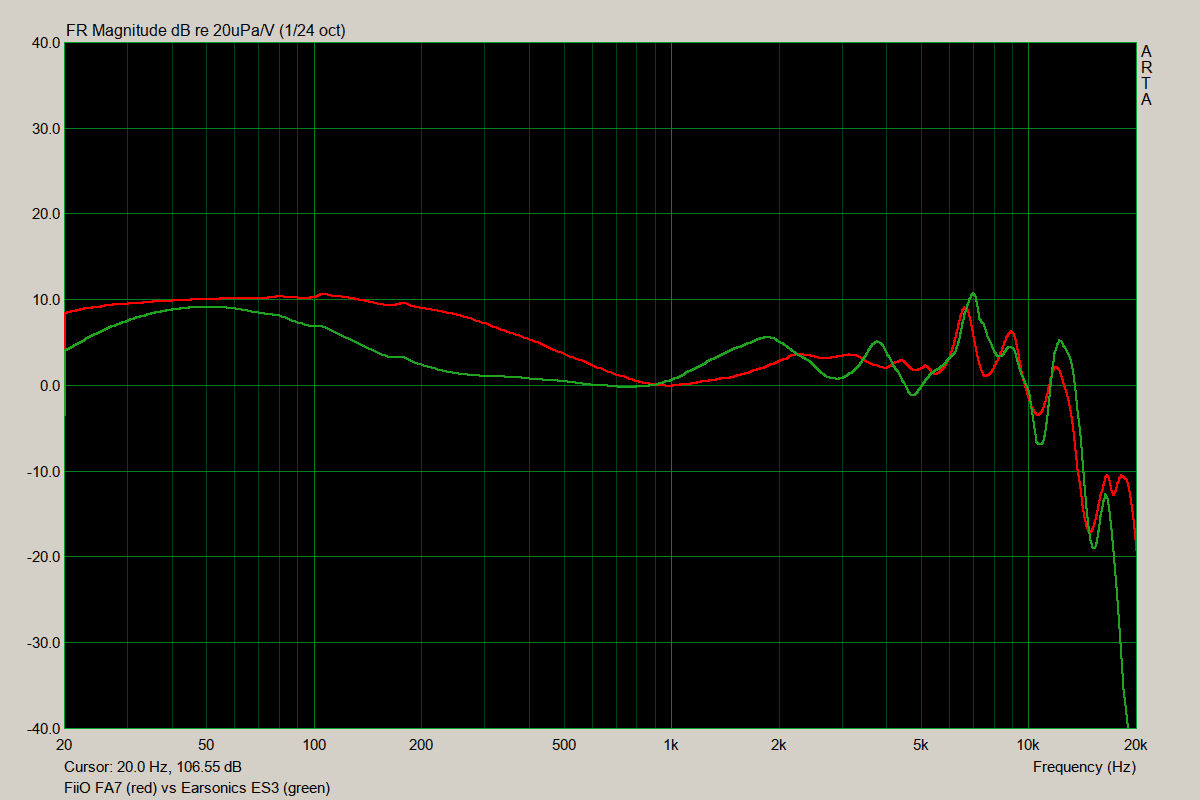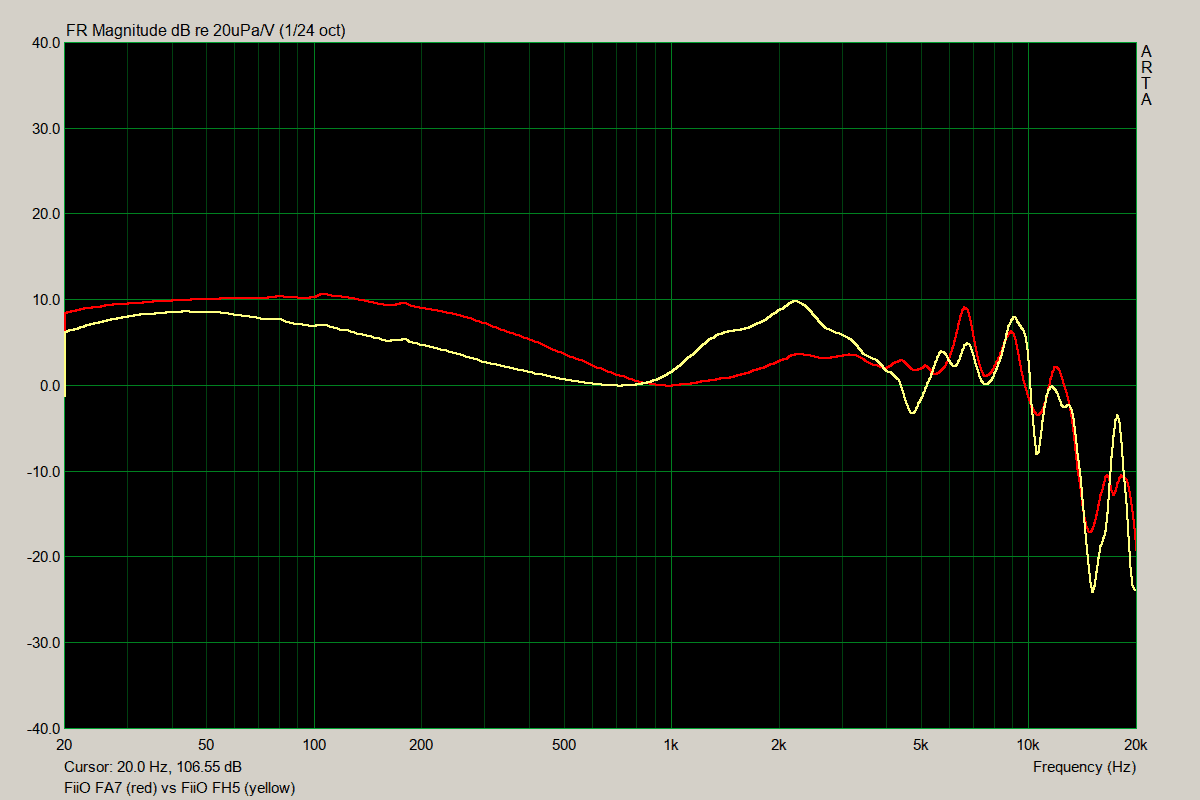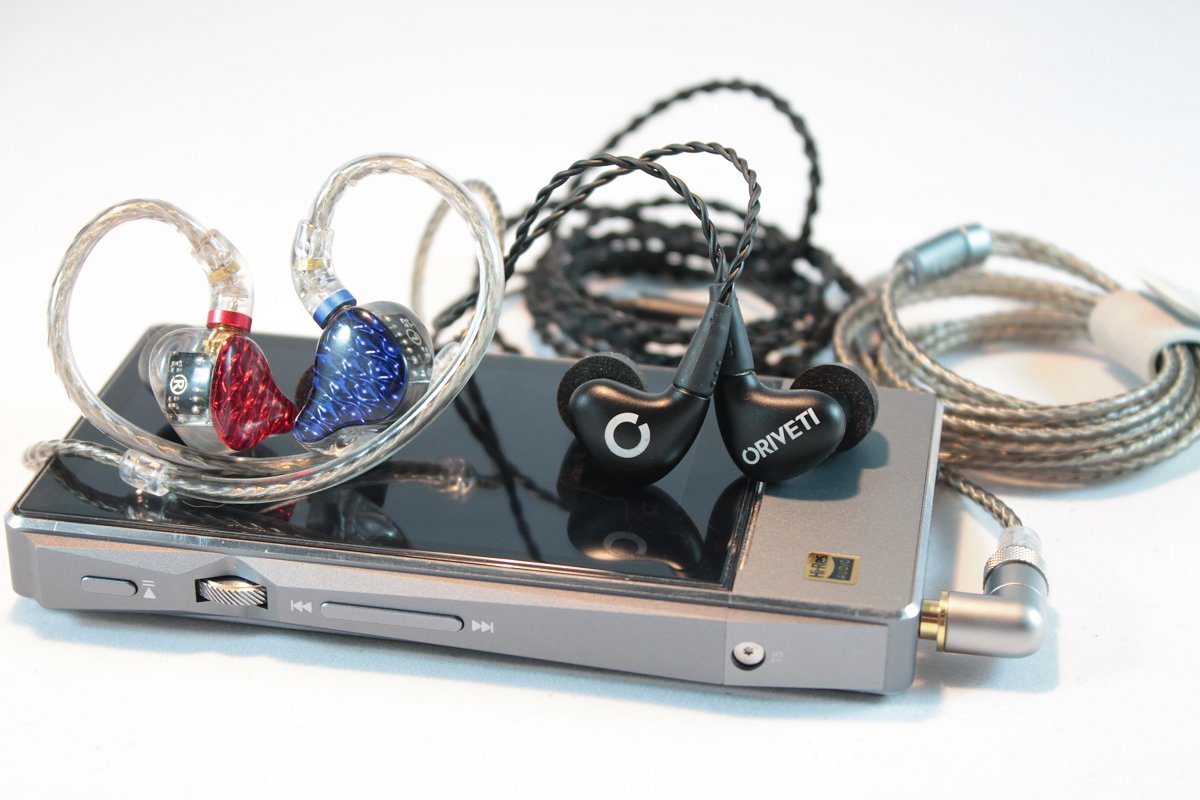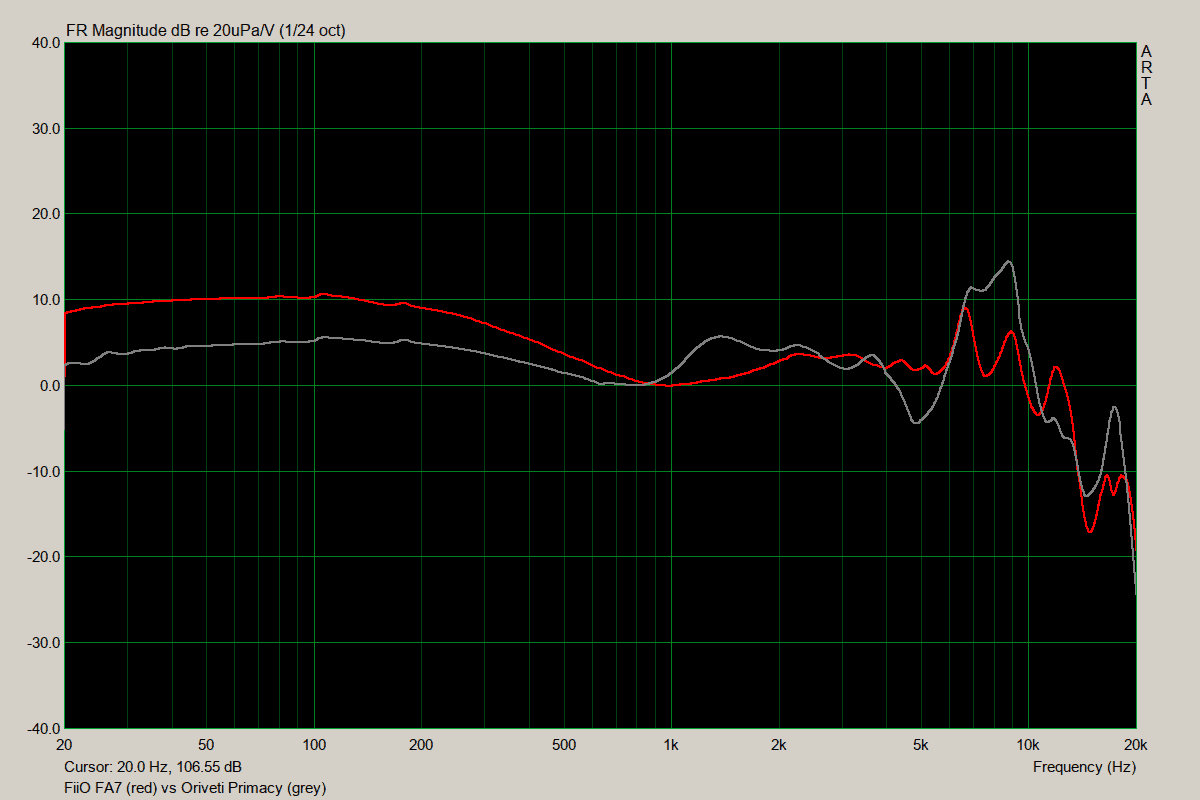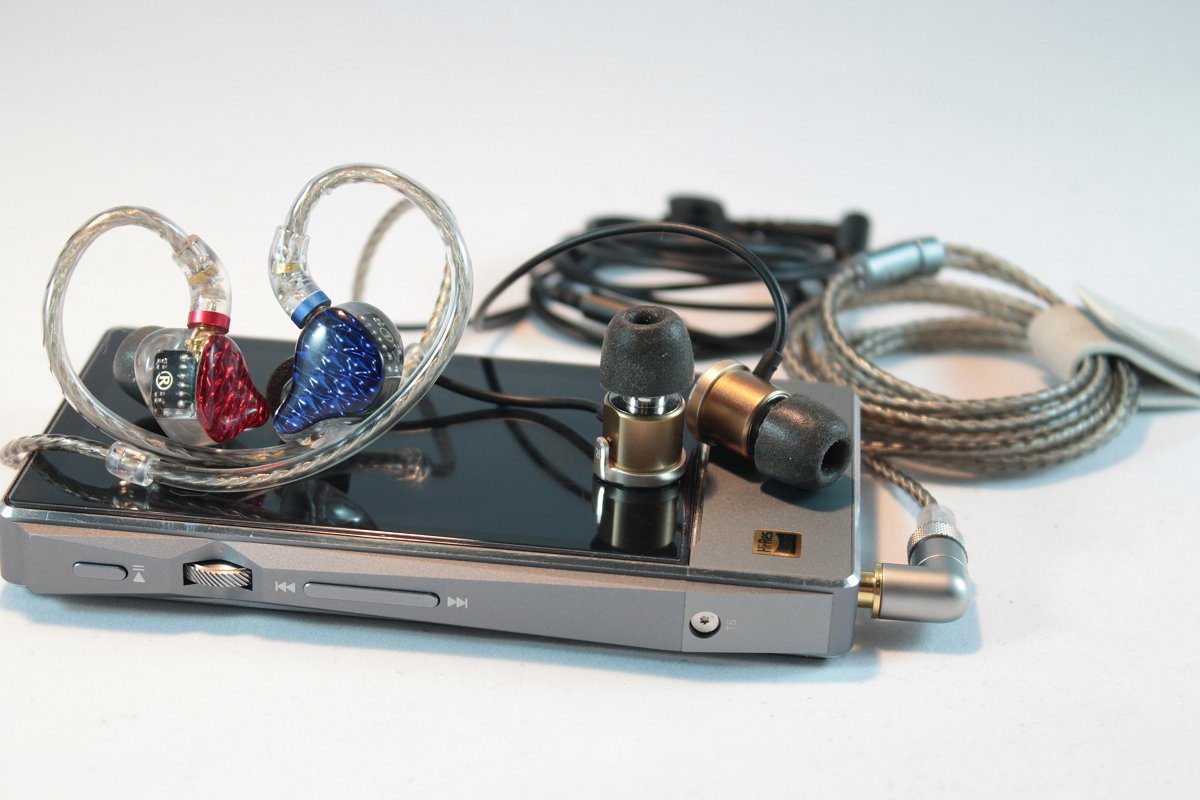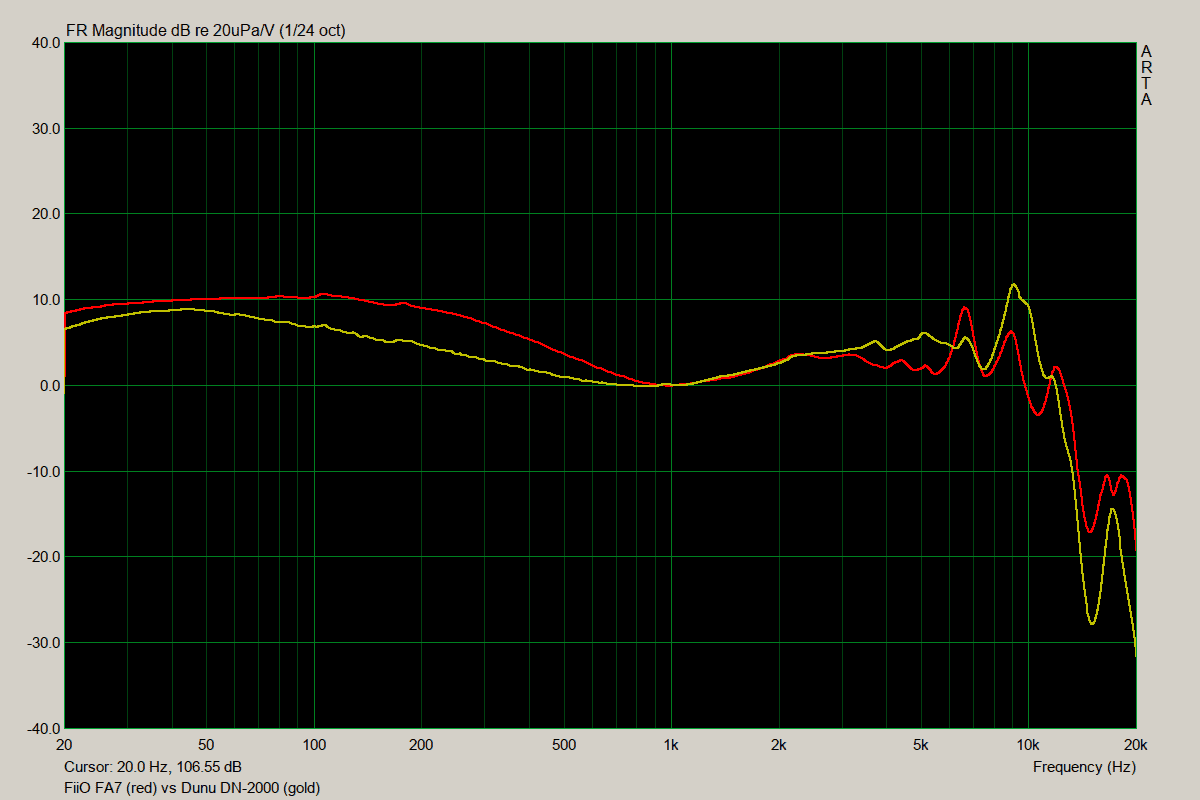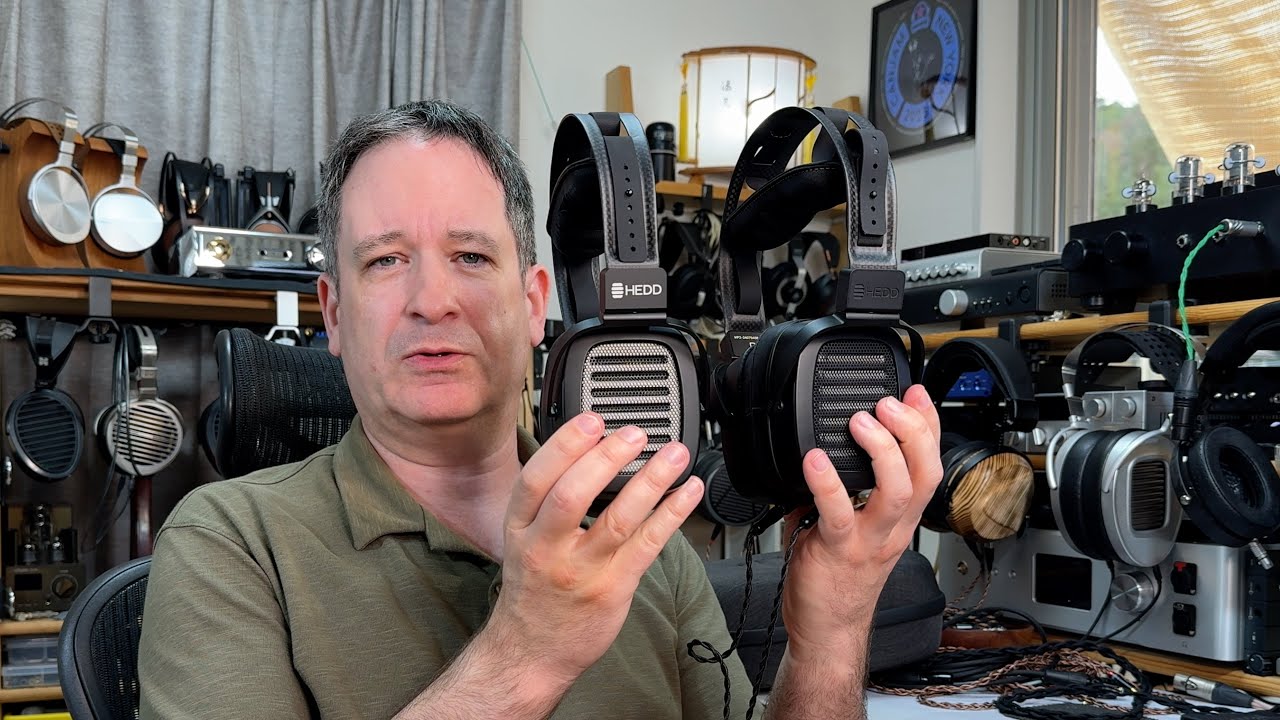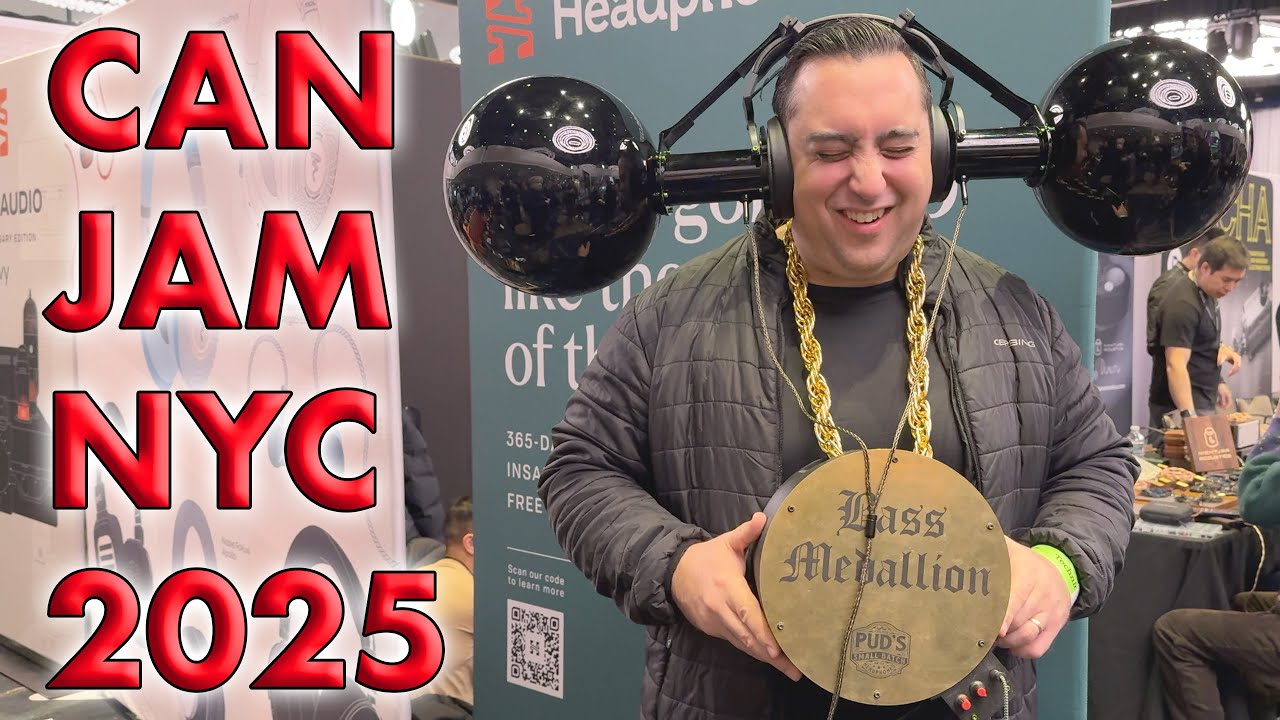INTRODUCTION
The mid-range IEM market ($250-500) has been somewhat dominated by hybrid designs recently, where in the past it was mainly the home of the more established multi-BA based earphones. FiiO has steadily progressed their own line of hybrid and all-BA IEMs (FH1, F9, F9 Pro, FH5) over the last 2 years, and the natural progression for the next iteration (after the release of the FH5 quad hybrid), was always going to be a quad BA.
So far (IMO of course), FiiO’s hybrids have followed a set pattern, tending to be warmer and smoother aided by the dynamic driver for bass. Their all BA releases (F9 family) have tended to be leaner and brighter. My hope for the FA7 (quad BA) was that they would release a reference IEM – essentially balanced across the frequency range. So how did the new FA7 stack up? Read on for my impressions.
ABOUT FiiO
By now, most people with an interest in personal audio (and especially portable audio) should know about the FiiO Electronics Company. If you don’t, here’s a very short summary.
FiiO was first founded in 2007. Their first offerings were some extremely low cost portable amplifiers – which were sometimes critiqued as being low budget “toys”. But FiiO has spent a lot of time with the audio community at sites like Head-Fi, and continued to listen to their potential buyers, adopt their ideas, and grow their product range. They have a full range of digital audio players and many of these are on their 2nd or 3rd iterations. Their flagship products can comfortably sit amongst other other creators of audio products, and often compete with higher priced models.
They’ve also developed new cables, desktop and portable amplifiers, DACs, ear-buds and earphones. In the earphone line, they have rapidly matured, now developing both hybrid and all BA series IEMs.
FiiO’s products have followed a very simple formula since 2007 – affordable, stylish, well built, functional, measuring well, and most importantly sounding good.
DISCLAIMER
The FiiO FA7 that I’m reviewing today was provided to me freely as a review sample. FiiO have asked me to keep it for my personal use, or for follow up comparisons, and I thank them for this. The retail price at time of review is ~ USD 299.
PREAMBLE
If you haven’t read any of my reviews, I suggest starting here, as it will give you an insight into my known preferences and bias.
For the purposes of this review – I used the FiiO FA7 straight from the headphone-out socket of many of my portables, but predominantly the X5iii, M6, M9, X7ii, and my iPhone. I did not generally further amp them (I did test them with my Q1ii, XRK-NHB, and E17K), as IMO they do not benefit greatly from additional amplification (YMMV and it may depend on your source). In the time I have spent with the FA7, I have noticed no change to the overall sonic presentation (break-in).
This is a purely subjective review – my gear, my ears, and my experience. Please take it all with a grain of salt – especially if it does not match your own experience.
THE PACKAGE
The FiiO FH5 arrived in quite a large (~ 155mm x 206mm x 78mm) retail box with very simple black over-sleeve (just the words FiiO, FA7, Hi-Res Audio logo, and a graphic image of the FA7 on the sleeve). Inside is a large book style case, simply embossed with the FiiO name/logo. Opening this reveals the FA7 safely held inside a foam cut-out. Under the cut-out are two compartments – one holding the large array of tips and the second holding the carry and storage cases. The storage case is very similar to their other Pelican type cases and provides pretty good protection as well as storage. Because of it’s size, its more suited to jacket pocket than pants pocket use.
There is also a pocketable soft-case (similar to the one from the FH5). Its essentially a neoprene fabric clamshell (zipped) which has sufficient padding to protect, but is small enough to fit in a pants / jeans pocket. Its a perfect size.
The full accessory package includes:
- 1 pair FiiO FA7 IEMs
- 1 x 3.5mm MMCX stereo cable
- 3 sets of “balanced” silicone tips
- 1 set of “bi-flange” silicone tips
- 3 sets of “vocal enhanced” silicone tips
- 3 sets of “bass enhanced” silicone tips
- 3 set of foam tips
- 1 x cleaning tool
- 1 x magnetic cable tidy
- 1 x velcro cable tidy
- 1 x rigid Pelican type case
- 1 x soft neoprene carry case
- Instruction manual & warranty card
The tips are interesting – the tuning ability seems to come down to aperture width and also material rigidity. They supply of 3 sets of “M” foam tips. Due to the longer nozzle / slightly deeper fit of the FA7 (compared to FH5), this time the M’s do fit my “goofy” ear canals.
MEASUREMENTS
The graphs I use are generated using the Vibro Veritas coupler and ARTA software. Ken Ball (ALO/Campfire) graciously provided me with measurement data which I have used to recalibrate my Veritas so that it mimics an IEC 711 measurement standard (Ken uses two separate BK ear simulators, we measured the same set of IEMs, and I built my calibration curve from shared data). I do not claim that this data is 100% accurate, but it is very consistent, and is as close as I can get to the IEC 711 standard on my budget. I suspect it is slightly down at around 9-10 kHz, and tend to dip slightly at sub bass with foam tips), but seems reasonably accurate through the rest of the spectrum.
I do not claim that the measurements are in any way more accurate than anyone else’s, but they have been proven to be consistent and I think they should be enough to give a reasonable idea of response – especially if you’ve followed any of my other reviews. When measuring I usually always use crystal foam tips (medium bore opening) – and the reason I use them is for very consistent seal and placement depth in the coupler. I use the same amp (E11K) for all my measurements – and output is under 1 ohm.
The graphs are provided merely as a point of discussion, and later in the review I’ve included comparisons to other IEMs for similar reference. Channel matching is extremely good (almost perfect) over the entire frequency range.
BUILD
The FiiO FA7 has the type of shape you would normally associate with higher end customs, and is a peanut/jelly-bean shape design. It is designed to ergonomically fit snugly inside your outer ear cavity, securely held inside the Concha with the skinny end inside your Intertragical notch. Just like true customs, it has a small rise of resin at the rear of the IEM shell to comfortably accommodate placement over the Crux helix and sit intact on the Cymba.
Compared to the FH5, the FA7 is quite small – measuring approx 25mm across, but only 11-12mm high and approx 13mm deep, with the nozzle extending a further 7mm (slightly upward). The shell is 3D printed (DPL) high quality resin. It is manufactured with a resolution of up to 25um and is incredibly accurate which allows extremely high consistency between production units. The resin used has high transparency and certified as skin friendly. There is a L/R indicator printed on the rear of the cross-over board, and other than the blue and red face-plates, there are no other markings. The nozzle measures 5mm across, and has a 3 way internal tube design to the sound tubes. There is no mesh.
At the top rear of the FA7 shell is an almost flush fitting standard MMCX socket (protrudes by about 0.5mm). The socket is very firm with the supplied cable (and after market cables I have tested also). The FA7 comes with a single ended CPS cable. FiiO have used a high purity mono-crystalline copper plated silver wire encased in a very flexible transparent TPU sheath. From the MMCX connectors to the Y-split is a single twisted pair on each side, and then from y-split to jack is two side-by-side twisted pairs. The FA7 cable has preformed ear-loops – again with a colour coded (blue or red) indicator. I find these loops really comfortable and work well. Both the Y-split and Jack are metal, and there is a cinch above the Y-split which works well for snugging the cable tight. The cable has low microphonics – essentially non-existent when using the cinch.
Internally the FA7 uses a 4 way BA driver system. Bass is handled by a Knowles CI-22955, the mid-range by a Knowles ED-29689, and treble by the Knowles dual-BA SWFK-31736. The four drivers are connected using a 4-way electronic cross-over system.
All in all, the design and build quality is pretty much faultless, and what I would personally expect from an IEM in a much higher price bracket.
FIT / COMFORT / ISOLATION
Internal and external isolation is excellent even for a BA-based IEM (which usually excel with isolation anyway). It does ultimately depend on tip choice and seal. I would rate the passive isolation at least as good as Shure’s (using supplied foam tips) and have no problems using the FA7 on flights or any other higher noise public transport.
Fit and comfort thoughts are very subjective, and will vary from person to person. My experience has been one of complete satisfaction. The FiiO FA7 has been designed for a completely ergonomic fit (much like a custom monitor). For me they are a perfect, sit flush with my outer ear, and basically disappear within a few seconds of wearing (I could forget they are in). I have slept with them intact, and woken hours later with them still there and no discomfort.
The lack of hard edges and the smooth internal finish contribute to an extremely positive experience. The FA7 is designed to only be used cable over ear. One single caveat here – if you are not used to using custom type monitors, the slight rise at the rear can cause temporary discomfort until your ears adjust. Within a few weeks of regular wearing this does dissipate.
The FA7 has a good lip on the nozzle. I’ve tried Spiral Dots, Spin-fits, Ostry tuning tips, Sony Isolation tips and Symbio Mandarines – all fit easily and are very secure. The best combination of seal and comfort for me has been with the provided foam tips).
SOUND QUALITY
Most of the testing at this point was done with my X7ii, no EQ, and the provided foam tips. I used the X7ii simply because paired they not only gave me a very transparent window to the music with low impedance, and more than enough power. There was no EQ engaged.
For the record – on most tracks, the volume level on the X7ii (paired with AM3A) was around 35-40/120 on low gain (depending on the track) which was giving me an average SPL around 65-75 dB. Tracks used were across a variety of genres – and can be viewed in this list https://www.head-fi.org/f/articles/brookos-test-tracks.17556/
While testing I constantly switched with my reference pair (Alclair Curve + E17K with +4 bass) to give me a good reference base-line.
Relativities
- Sub-bass – Elevated with very good extension and easily audible rumble (Lorde’s “Royals). There is some bleed (both sub and mid-bass) into the mid-range. Both sub and mid-bass tend to dominate, and the overall tonality is a lot of warmth.
- Mid-bass – elevated with good impact, and similar dominance to the sub-bass. The bass timbre and definition is slightly loose, but I suspect that’s more to do with quantity rather than the quality, as with less bass dominant tracks the definition is quite good. Overall speed and transient response is pretty capable though. Eminem’s “Lose Yourself” showed plenty of thump, and sounded pretty good – until I switched to the adjusted Curve (for reference) – and on switching back, the FA7 clearly have a very warm tilt to the frequency response. Its easy to get used to the default signature and not notice how really warm/dark the tonality is.
- Lower mid-range – recessed compared to bass, but on the warm and rich side. Both male and female vocal fundamentals are very good. Can get a little swamped by the sub and mid-bass in more bass heavy tracks. Overall weight and timbre are good.
- Upper mid-range – if there was less bass dominance, this would be the perfect upper mid-range frequency response. There is a slow and shallow rise from the lower mid-range to a peak at 2-3 kHz, then a relatively extended progression to a further peak in the lower treble. The transition from lower to upper-mids is cohesive, and there is enough presence to provide both detail and presence. This is the best upper mid-range I’ve seen from any FiiO IEM, and its just a pity its dominated by the bass. In isolation, and on less bass heavy tracks, the FA7 sounds divine (altoguh still to warm for my tastes).
- Lower treble has very good extension, and a nice overall balance throughout. It is also quite linear with an emphasis at 6-7 kHz for cymbal brilliance. This provides gives good clarity with cymbal strikes, and the subsequent decay is also good . Its worth noting here that the lower treble is not overdone, and if anything provides reasonable detail without over-emphasis. It really shines if you dial back some of the bass a little.
- Upper treble extends quite well with some decent “air”, but is difficult to capture properly on my measurement rig, and with my “aged” hearing I no longer notice much over 12 kHz anyway.
Resolution / Detail / Clarity
- Clarity overall can be good, but is masked somewhat by the elevated sub and mid-bass. Micro details are there but at times you need to listen quite hard to discern them.
- Cymbal hits have good clarity and presence and aren’t over-emphasised. They do sit back in the overall mix, especially if a track has a strong bass guitar. Decay is good, and trails off nicely after the cymbal strike (as long as its not masked).
Sound-stage, Imaging
- Directional queues are good – relatively clear (again depending on the level of masking / bass quantity in the track). Presentation of stage is outside the periphery of my head space with binaural tracks, so expansive for an IEM.
- With the live recording of Loreena McKennitt’s “Dante’s Prayer”, the applause section is a good test for width and depth (the sound of the audience flowing around me). Width of stage is a little wider than overall depth, but still gives a good presentation.
- “Let it Rain” (Amanda Marshall) gave a nice three dimensional feel (the way the track is miked) with good guitar and vocal presence (albeit with again some dominance from the bass guitar). There was only slight sibilance with Amanda’s vocals – and it should be easily nioticeable because its in the recording. But compared to other experiences with reference gear, this was a quite warm presentation with further evidence of masking.
Strengths
- Balance of the mid-range, upper mid-range and lower treble frequency ranges.
- Impact of both sub and mid-bass (may suit those with bass heavy preferences).
- Reasonably expansive sense of stage
- Good for both female and male vocals.
- Lower treble extension and balance.
Weaknesses
- Quantity of the bass dominates and masks other frequencies
- Too much overall warmth tends to detract from clarity
AMPLIFICATION REQUIREMENTS
The FiiO FA7 doesn’t need amplification for overall volume – and because its impedance isn’t overly low, any source with an output impedance of less than 2-3 ohms (to meet damping requirements) should pair OK.
With my iPhone SE around 25-35% volume is more than enough with most tracks, and the FiiOs are generally at around 30-40/120 single ended. I also tried the FA7 with the Q1ii, E17K and XRK-NHB, but noticed no real differences in dynamics on any except for the XRK-NHB. The second order harmonics with the XRK-NHB were too much and did tend to add more body and warmth to the overall presentation which the FA7 definitely doesn’t need.
RESPONSE TO EQ?
By now you already know where I consider the FA7’s single weakness to be – the sub-bass, mid-bass and transition to lower mid-range is simply over-done (too much quantity). Fortunately this is an easy fix with the E17K. Simply using the tone controls to drop the bass by -4 or -6 was enough to reduce the bass dominance while retaining both overall frequency balance, and also preserving the vocal performance.
If this had been the default signature, I do think FiiO would have been closer to a more acceptable overall tonality (for my tastes anyway). Fortunately its an easy change to introduce. Interestingly enough – this small change starts to put the frequency response (overall) very close to that of the CA Andromeda.
COMPARISON WITH OTHER IEMS
These comparisons were all done with the X7ii, (no EQ) – and volume matched using a calibrated SPL meter and fixed 1kHz test tone first. For this series of tests I’ve tried to stick to multi-drivers (hybrids or BAs) with a price range close to the FA7 ($200-$600 range). For BA’s I’ve compared to the Brainwavz B400, Alclair Curve, Jays q-Jays, and Earsonics ES3. For the hybrids, I’ve used FiiO’s own FH5, the Orivetti Primacy, and Dunu’s DN-2000.
This is pretty subjective, but the graphs do show relativity against other reference points.
FiiO FA7 vs Brainwavz B400
Build fit and comfort
Both IEMs are 3D printed from resin, come with good accessories, and have MMCX replaceable cables. The fit and finish (including overall comfort) are of a much higher quality on the FA7, and the FA7 cable is also more sturdy with a better overall build quality and materials. Both are quad BAs.
Sound & Value
Both have an extremely good mid-range, and are on the warm side of neutral – but for different reasons. With the FA7, this is mainly due to the exaggerated sub and mid-bass, which extends into the lower mid-range. With the B400 this is due to the mid-bass and lower mid-range (compared to upper mid-range) and the softened lower treble from 4-9 kHz. Both are warm IEMS – but the FA7 is the darker of the two. Under EQ both can be corrected to a more reference signature. The B400 is 2/3 the price of the FA7 – but I prefer FA7’s overall build quality. Without the ability to EQ, I prefer B400’s default signature.
FiiO FA7 vs Alclair Curve
Build fit and comfort
Both IEM shells are BA based – the FA7 has 4 drivers where the Curve has 2. Both have very good fit, finish and comfort. The FA7 has slightly better build, while the Curve has slightly better comfort (they are both pretty much on par though). The FA7 has a better accessory range. Both have good quality cables.
Sound & Value
The two IEMs have a similar signature with one glaring difference. The FA7 has much more bass compared to the Curve. The FA7 is warm and dark, while the Curve is a little overly bright (lacking some bass). Both are easily corrected via an EQ adjustment to bass (with the FA7 it is bass and lower mids). The Curve needs 3-4 dB added (+4 on the E17K is ideal), and the FA7 needs a corresponding amount removed. After adjustment, both are much closer to reference. Given the $50 cheaper value and the slightly easier EQ – my preference remains with the Alclair Curve.
FiiO FA7 vs Jays Q-Jays
Build fit and comfort
This is pretty much a tie in accessories, in overall build quality and cable quality. Both are designed and made with extreme precision (resin vs metal alloy), and the main difference is in overall size (the Q-Jays being extremely small). Both are very comfortable to wear. The Q-Jays are dual BA vs the FA7 quad. Both have detachable cables. The Q-Jays use proprietary locking mechanisms so after market cabling would be difficult.
Sound & Value
Again both have similar signatures from 1 kHz up, and some of the 7kHz peak of the Q-Jays is countered by a deeper insertion (alleviating the resonant peak). The Q-Jays bass is a perfect match for the rest of it’s signature, and it is easy to EQ more bass if required. The Q-Jays have a nicely matched clean and clear signature which is well balanced, and perhaps slightly on the bright side of neutral. The FA7 are quite warm and much more on the dark side of neutral. Both are the same price and at the default signature, my preference is with the Q-Jays. I do look forward to an adjusted tuning of the FA7 though as it has the potential to be a better overall offering.
FiiO FA7 vs Earsonics ES3
Build fit and comfort
I chose this comparison because despite the high price difference, the ES3 is a headphone with a similar reference upper mid-range and treble. Again, pretty much a tie in accessories, in overall build quality and cable quality. Both are designed extremely ergonomically (resin vs resin). Both are very comfortable to wear. The ES3 are triple BA vs the FA7 quad. Both have detachable good quality cables.
Sound & Value
Again both have similar signatures from 1 kHz up. The ES3 has slightly more colouration in the upper-mids. The big difference is in mid-bass and lower mid-range. The ES3 is quite flat, and elevated only at the sub-bass. This creates a clean and clear monitor with some sub-bass warmth / impact – but overall a dryer and cooler tonality. The FA7 is very warm in comparison. The ES3 is almost double the price, which makes the FA7 a much better value proposition – subject to willingness to EQ. If I had to use the default signature, I’d prefer the ES3. This is another case where the both have deficiencies in the same area. The ES3 could use a little more lower mid-range. The FA7 needs a cut in bass and lower mid-range.
FiiO FA7 vs FiiO FH5
Build fit and comfort
This is a quad hybrid vs a quad BA. Both have very similar overall build quality (resin vs metal alloy), accessories and comfort. The FA7 is smaller, fits slightly deeper, and is a little more ergonomic. The FH5 is also very ergonomic and has a shallower fit. Both have the same detachable top quality cable.
Sound & Value
The FH5 has the more balanced end-to-end frequency response of the two, but has a very forward mid-range which at times can be fatiguing. It has good overall balance though with some good low impact from the dynamic driver. The lower treble is very non-fatiguing and slightly on the subdued side. The FA7 has considerably more mid-bass and lower mid-range making it appear warmer and thicker. Both respond well to EQ. There is only a $40 difference between the two ear-phones so it really comes down to preference. I prefer the FA7 mid-range, so as long as I can EQ down the bass, my preference is the FA7.
FiiO FA7 vs Oriveti Primacy
Build fit and comfort
This is a triple hybrid vs a quad BA. Both have very similar overall build quality (resin vs metal alloy), accessories and comfort. Both are small and very ergonomic. Both have the detachable quality cables, although the FA7’s cable has slightly better overall build.
Sound & Value
The Primacy is the much more balanced of the two (its not close), but has a slightly forward mid-range and a lower treble peak which may be fatiguing for some. It has good overall balance though with some reasonable low impact from the dynamic driver, and a clean and clear overall signature. The FA7 has considerably more mid-bass and lower mid-range making it much warmer and thicker. I don’t have to EQ the Primacy. I would definitely have to EQ the FA7. They are comparably priced. With EQ, I prefer the FA7’s better overall package. Without EQ I prefer the Primacy’s default signature.
FiiO FA7 vs Dunu DN-2000
Build fit and comfort
This is another triple hybrid vs a quad BA. Both are very well built (resin vs metal alloy), and both have very good accessory packages and cables (Dunu’s is non-removable). Ergonomically the DN-2000 is quite blockish (cartridge shape with some hard edges) so I much prefer the FA7’s ergonomic fit and comfort.
Sound & Value
The DN-2000 is one of the best tuned triple hybrid IEMs ever released and is extremely well balanced from end to end (with a slight warm tilt to the sub-bass). It is clean and clear, very non-fatiguing, and should be a referral point to anyone wanting to produce a reference tuned hybrid. The FA7 is comparatively very warm and thick and somewhat dark sounding. The DN2K can still be found in the $200-250 range and if the fit is good, they are excellent monitors (sadly I find them uncomfortable over time). Without EQ, my preference is the DN2K, but with EQ I’d go with the FA7 purely for comfort / fit.
VALUE
This is a really tough one, as the FA7 is very close to being the perfect IEM. FiiO nailed everything – build, fit, accessories, cable quality and did it for just under $300. And the mid-range and lower and upper treble are masterfully done. The elephant in the room of course is the elevated bass and lower mids – which don’t just give a warm sound, but a rather dark one. There is value here in the overall package as long as you are prepared to EQ or like a dark and warm signature. If they had nailed the signature this would have been almost a 10/10. Sadly for me they lose points on the overall frequency response. I have to EQ them to enjoy them.
FIIO FA7 – SUMMARY
This has been a roller coaster ride. At first glance, the FA7 are phenomenal. Great accessory package, exemplary design, superb fit and overall comfort. Couple that with the quality of the build, the quality of the cable, the little things like the neoprene carry case, and the new cable tidy and its already looking like a great package.
As far as SQ goes – the beauty of BA drivers is their overall speed and transient response. And FiiO have tuned the upper mid-range and lower treble perfectly. It is finally reference – brilliant job.
And then we get to the elephant in the room (and for me this is a real “jumbo”). They’ve decided to put a “consumer” tonality to the bass – and IMHO they have gone for quantity over quality (sadly). The bass is big, it is elevated, and it masks a lot of the detail in the almost perfect mid-range. I could live with elevated sub-bass – but their engineers have carried this through the mid-bass and even the lower mids (there is a lot of bleed / masking). For me it is very sad, because I thought that this was to be their break-through ….. an audiophile quad BA. Sadly its not to be.
So who will the FA7 be right for? If you like your bass large, warm and with an overall darker signature – then you may very well love the FA7. And if you are happy EQing, then it is possible to turn the FA7 into a much more responsive IEM – you’ll just need a lot of tweaking.
Overall for me though the FA7 is a case of “close, but not quite there”. They have shown that perfection is within their grasp though. I shall be looking forward eagerly to the FA9 or FA7 Pro (hopefully) with a more audiophile oriented tuning.
My thanks to FiiO and Lily for the chance to review the FA7. Good progress, and has the potential to be great.




